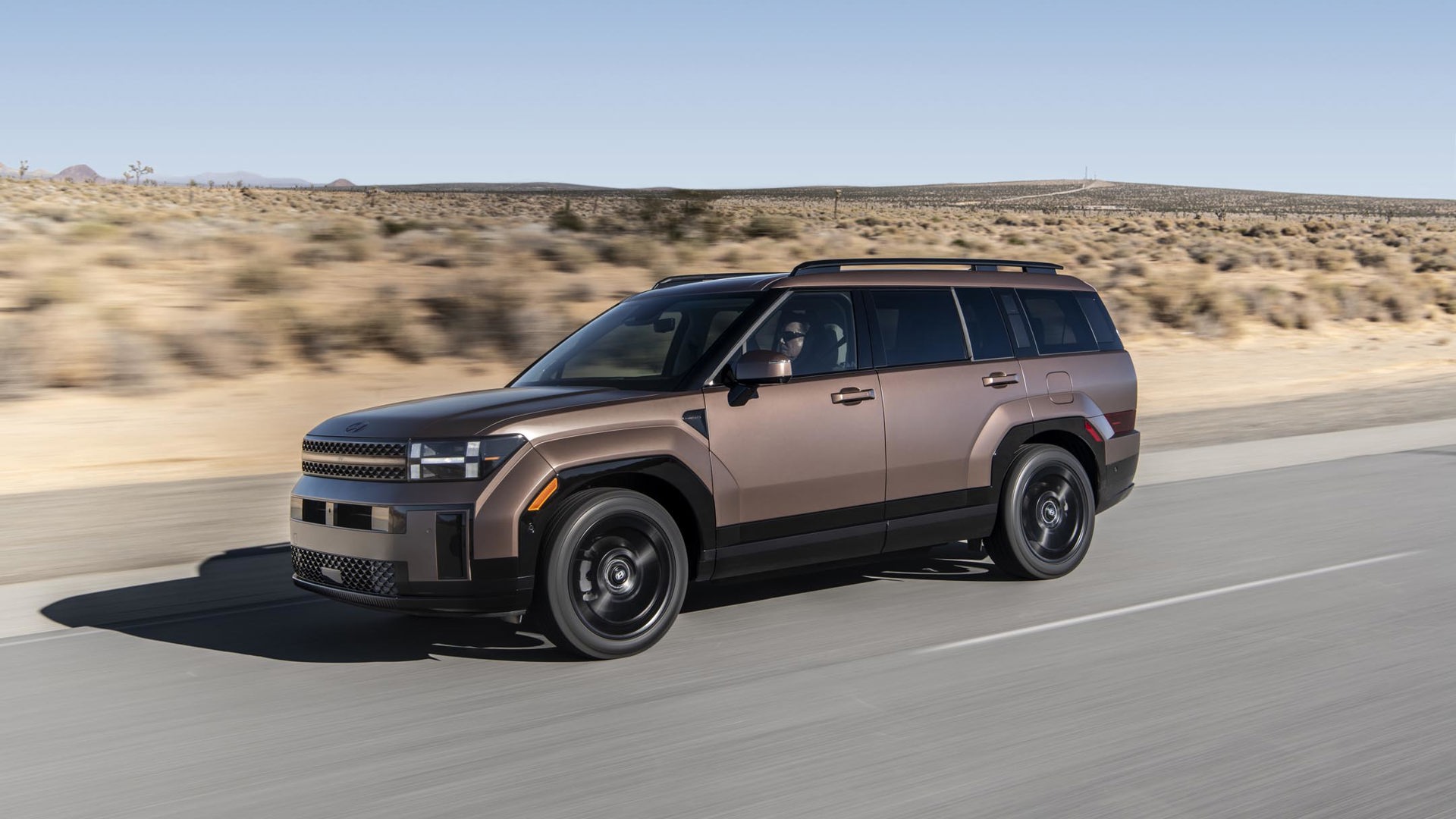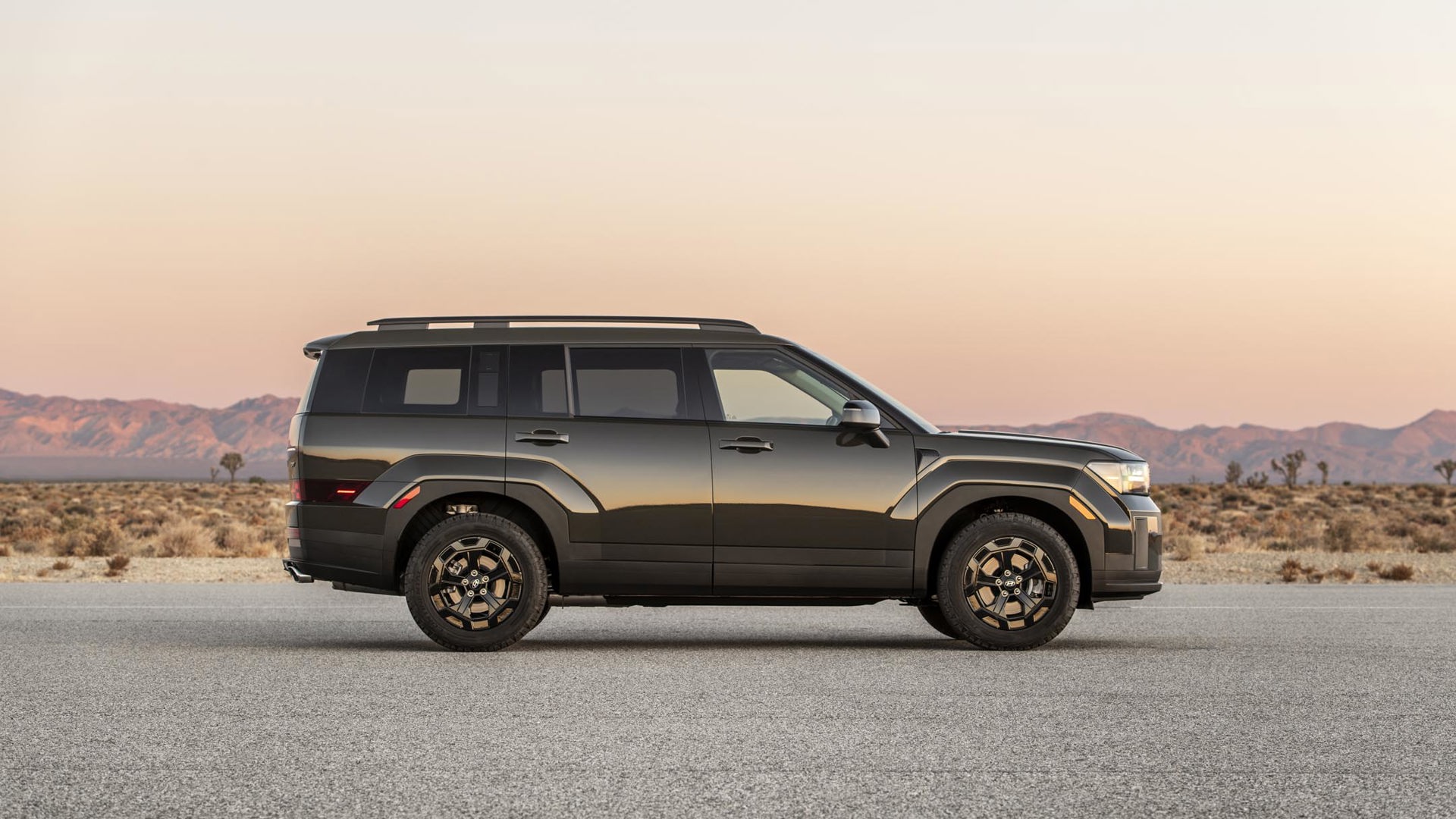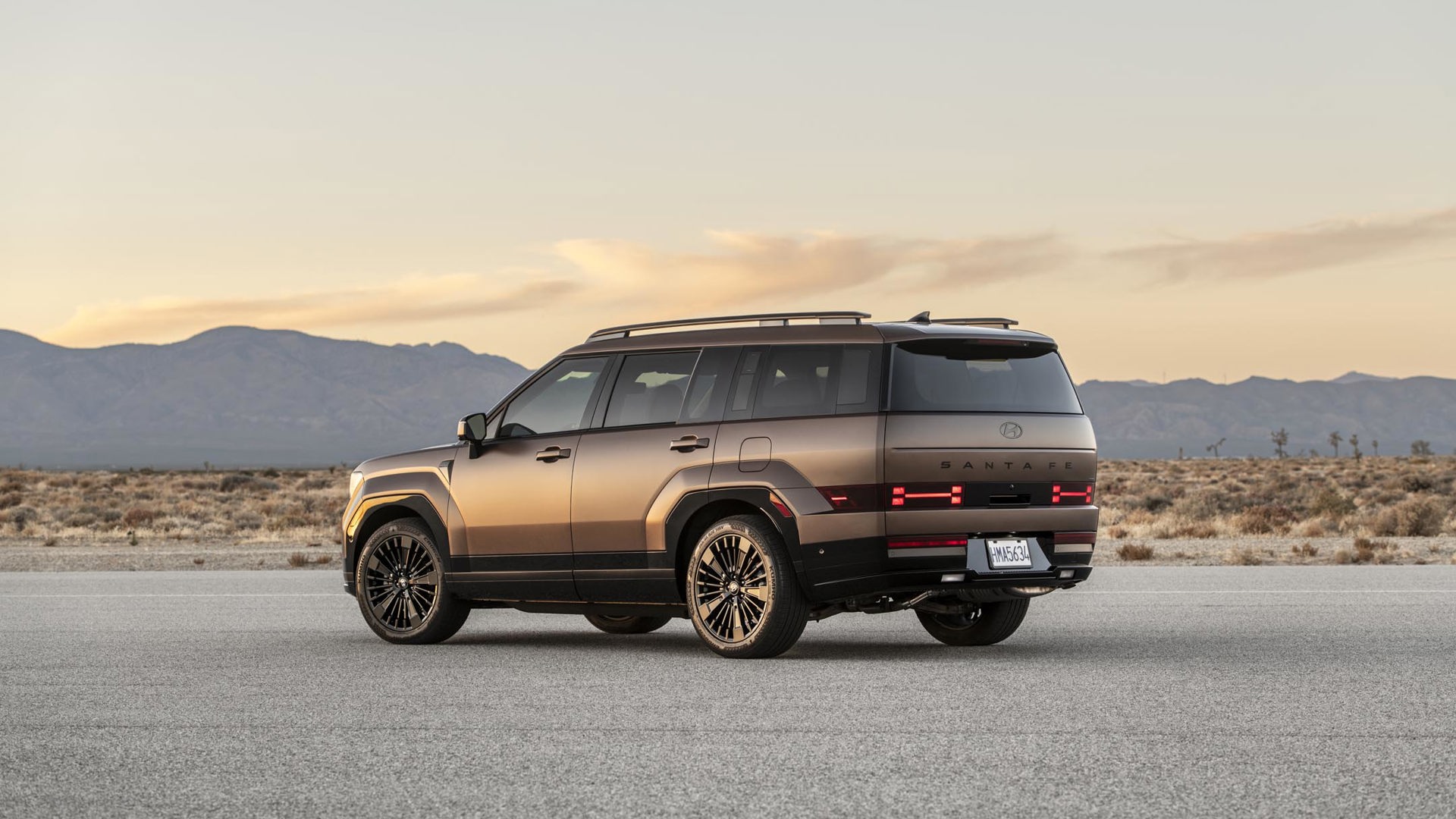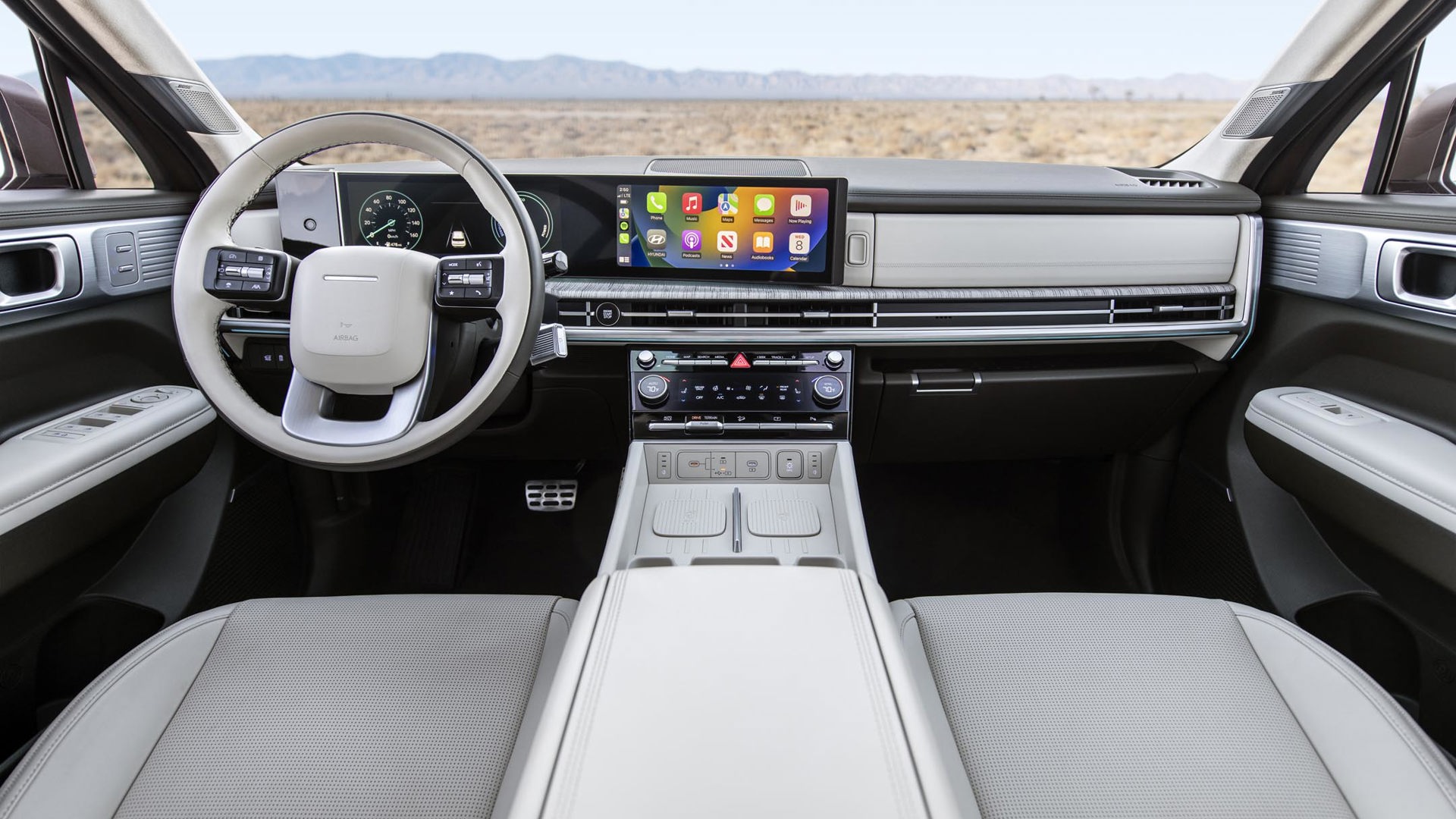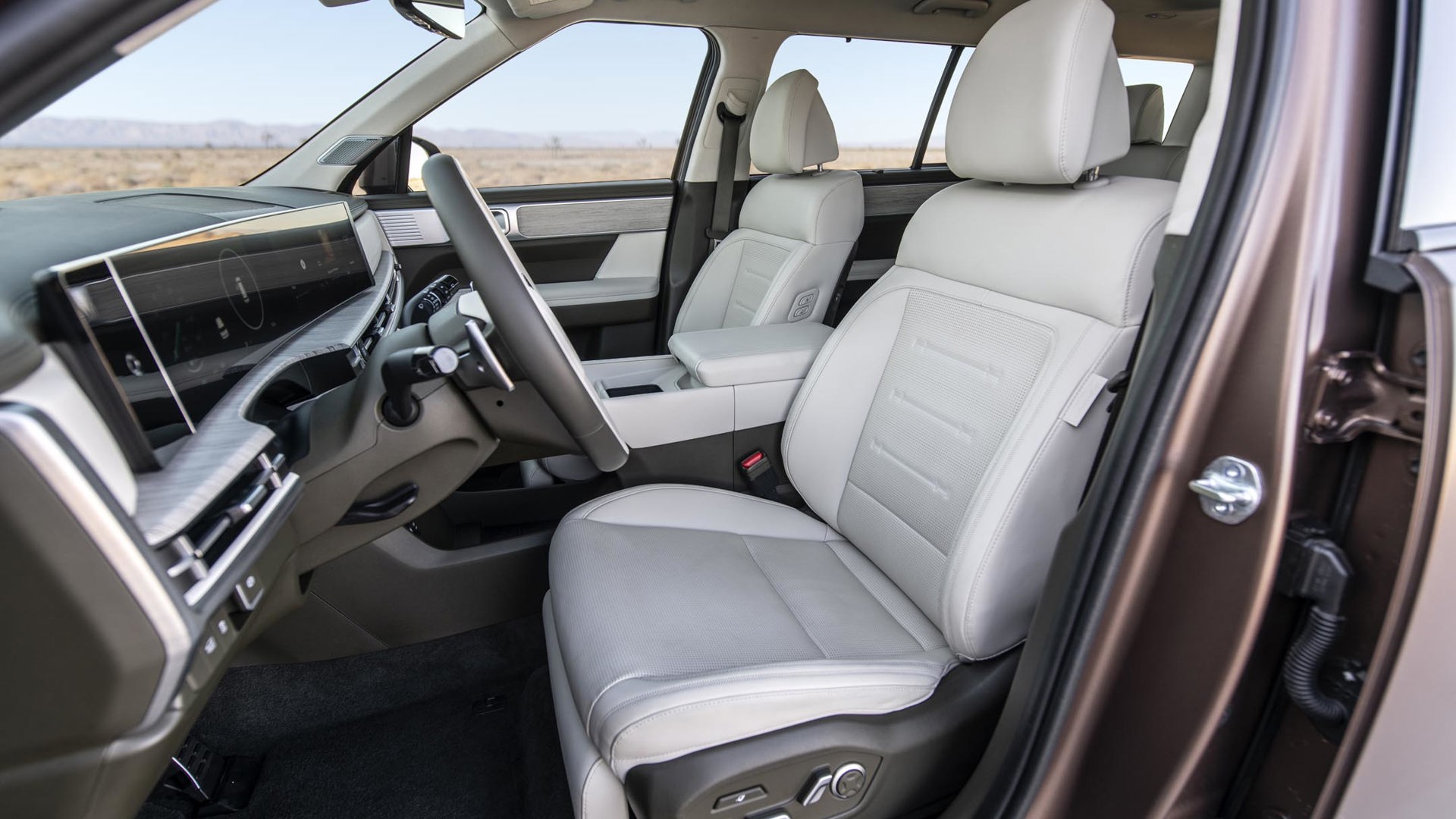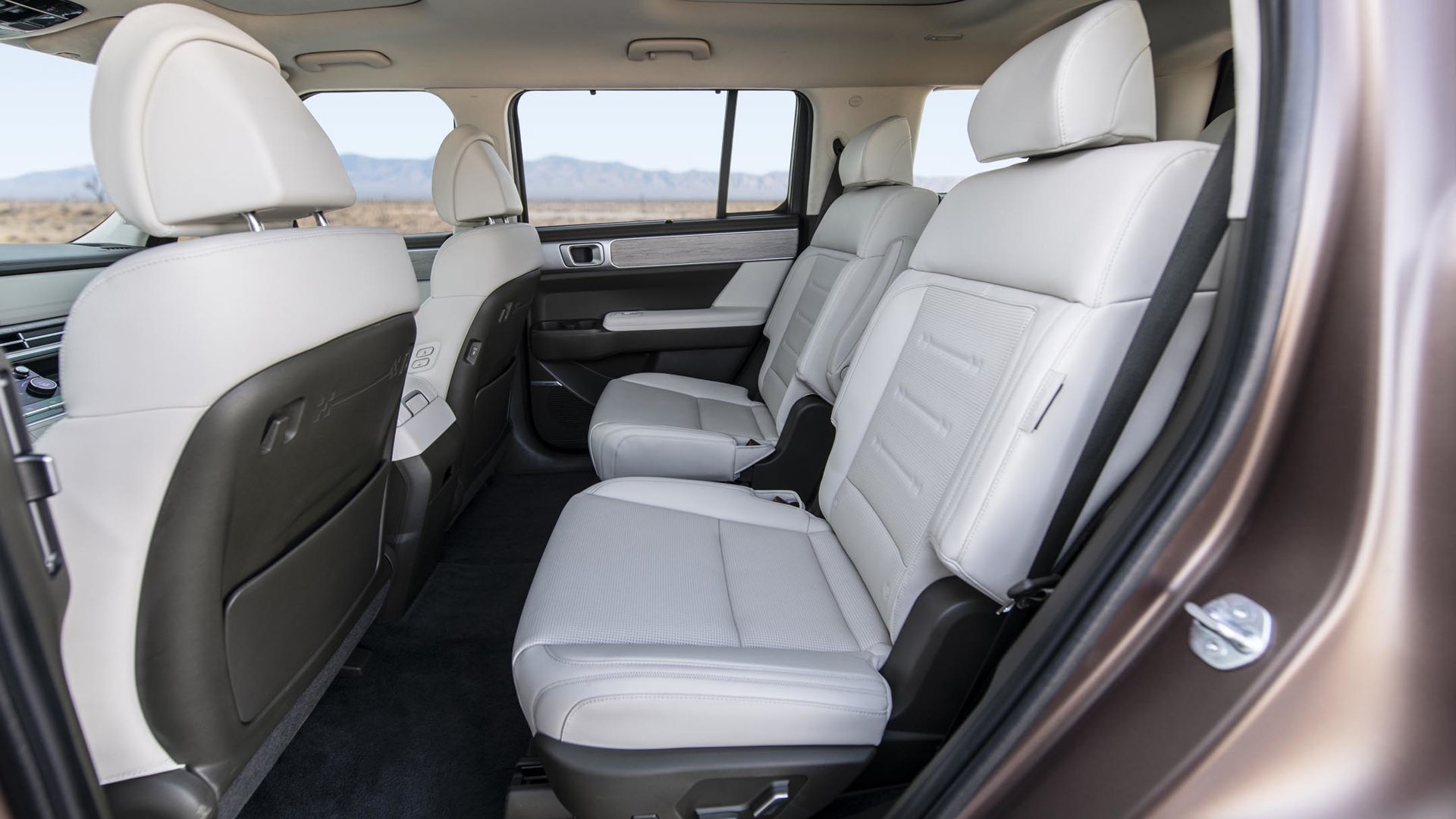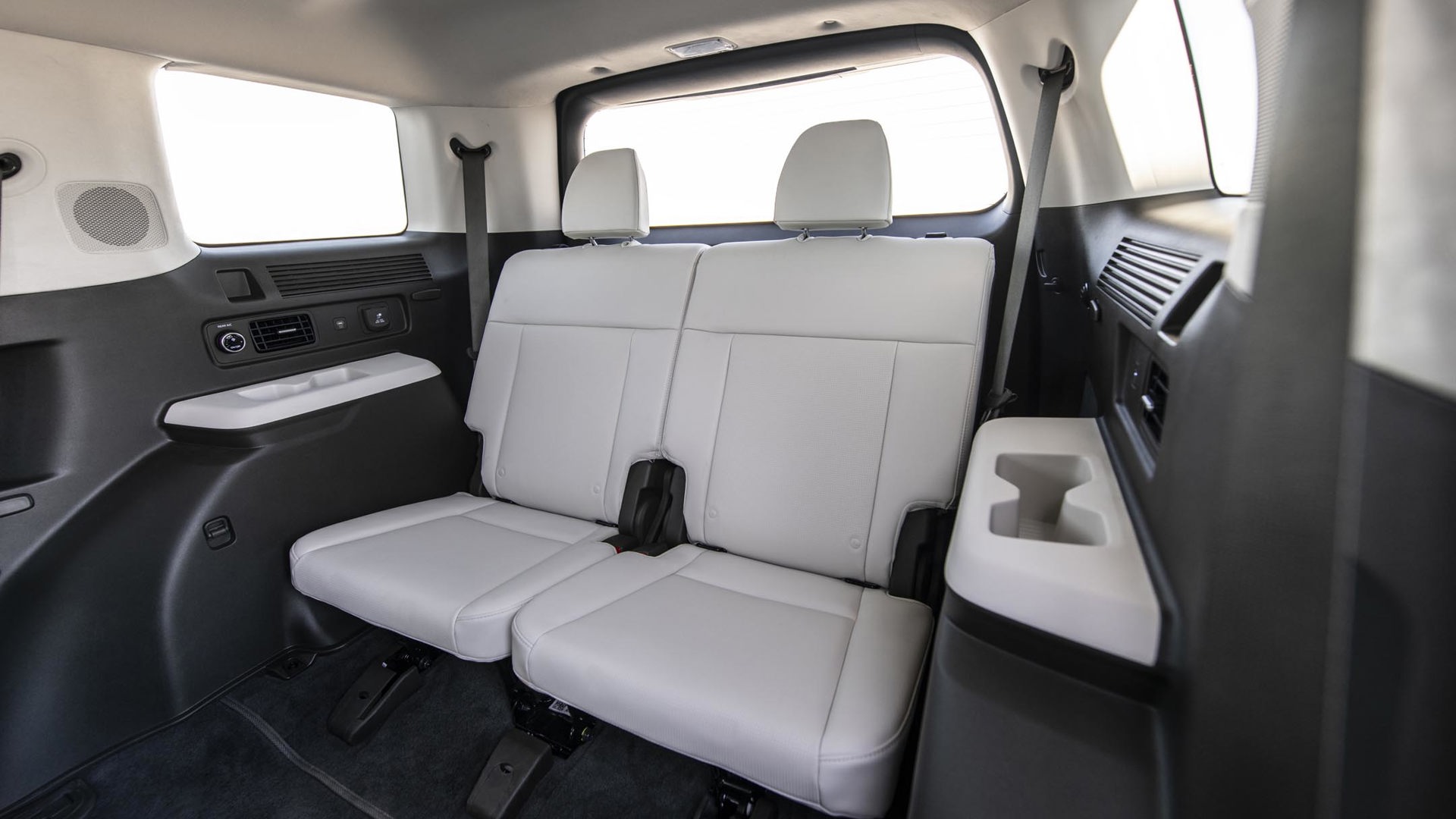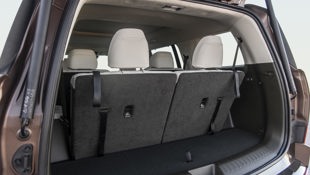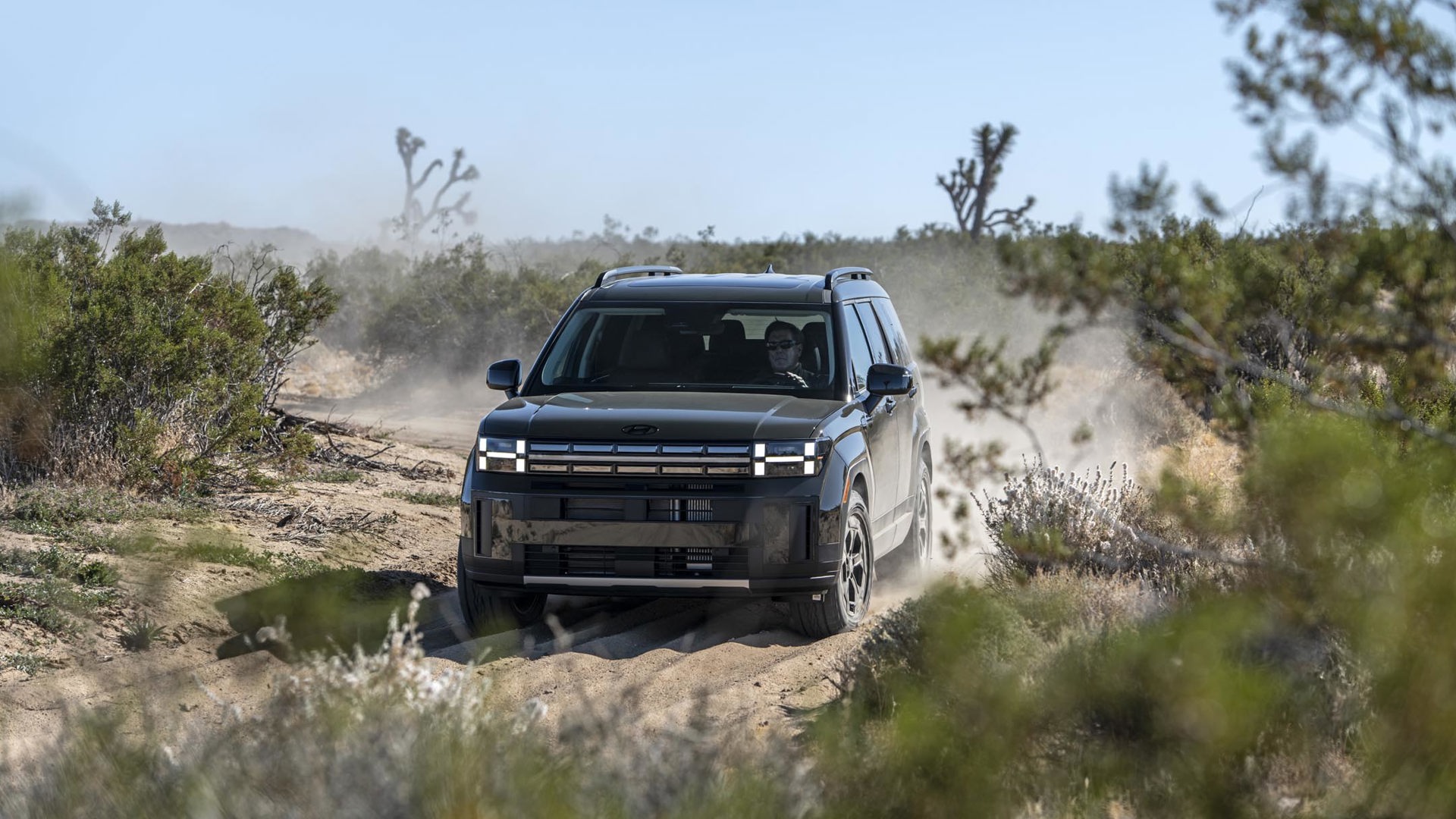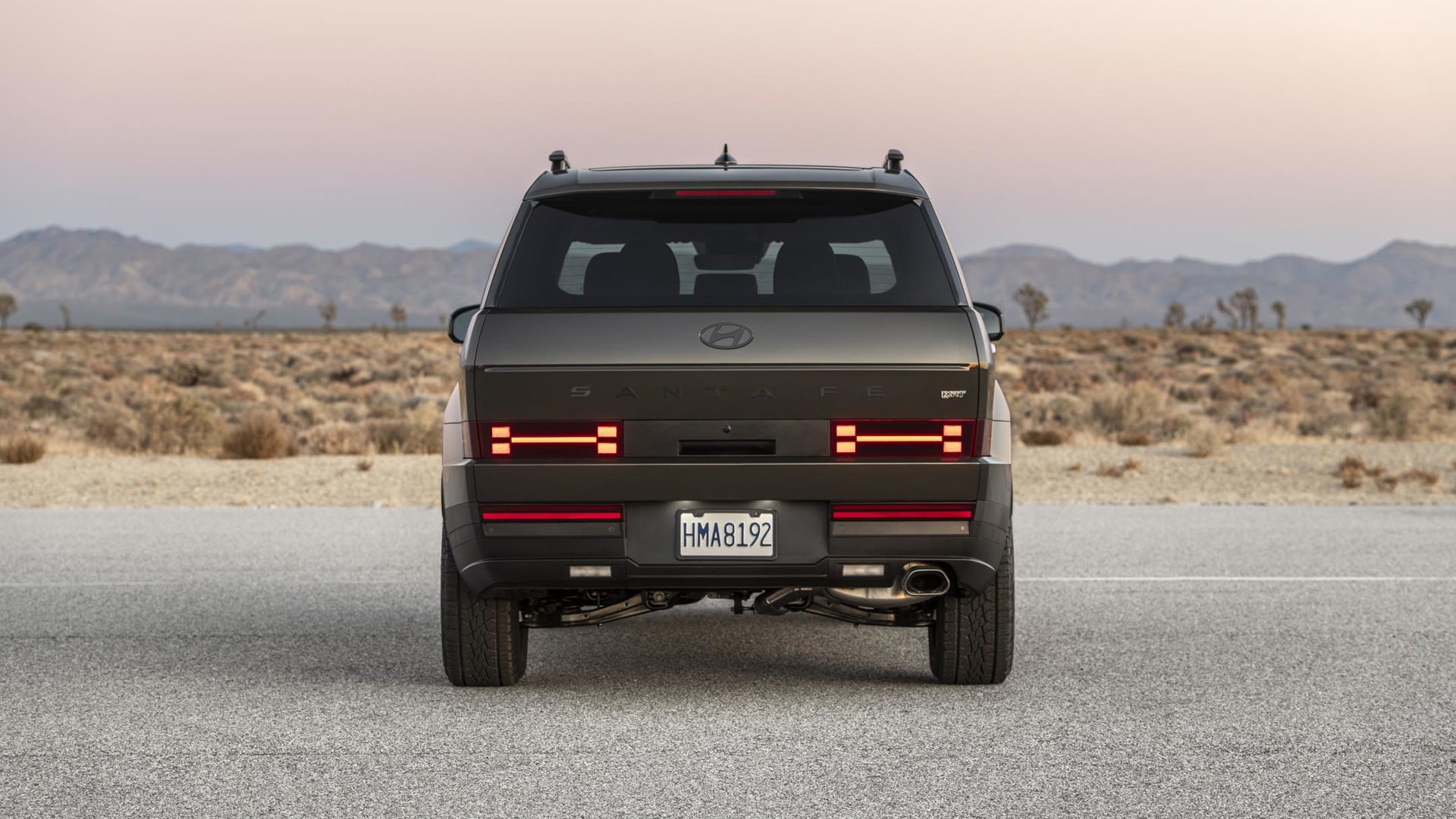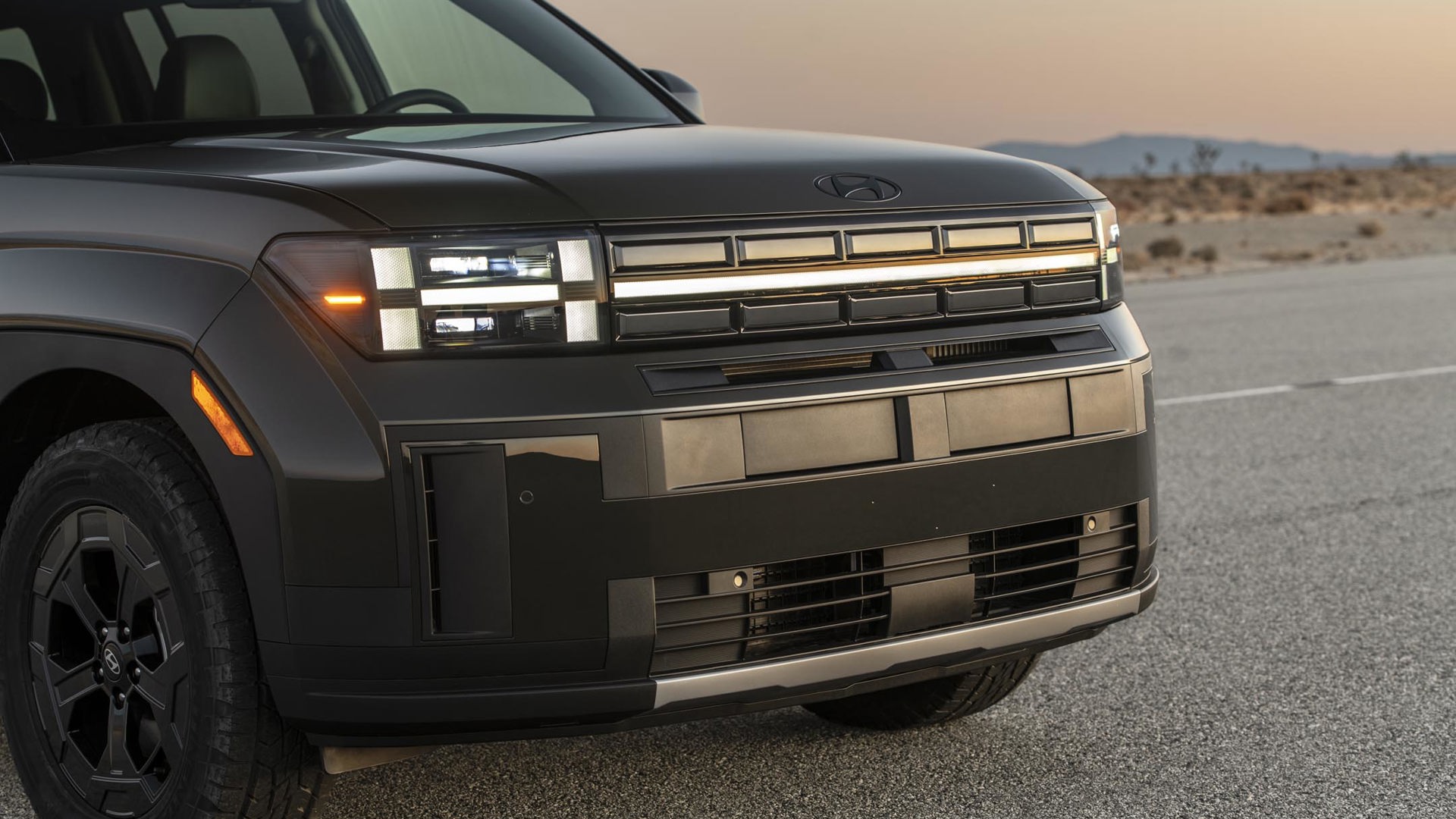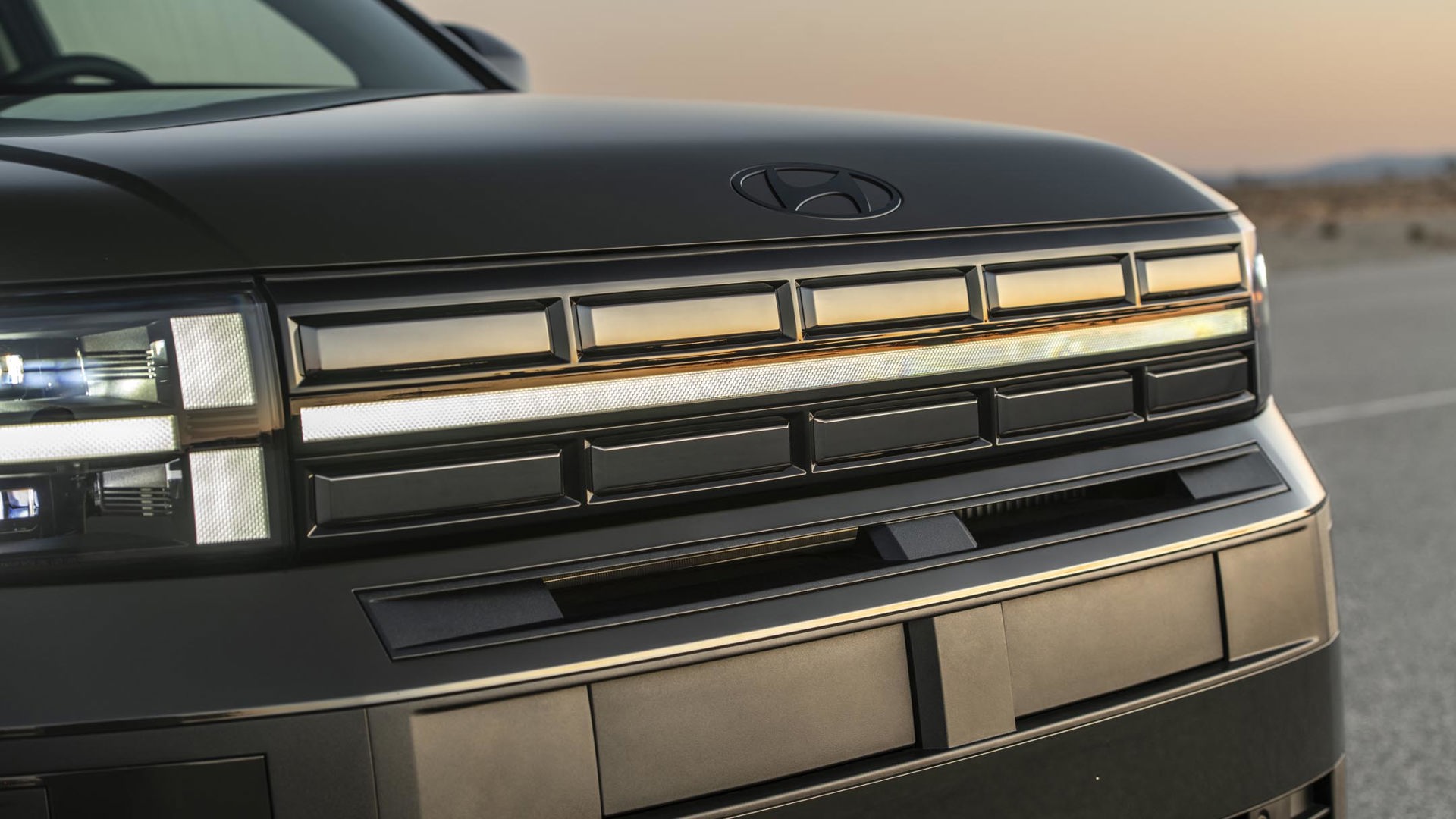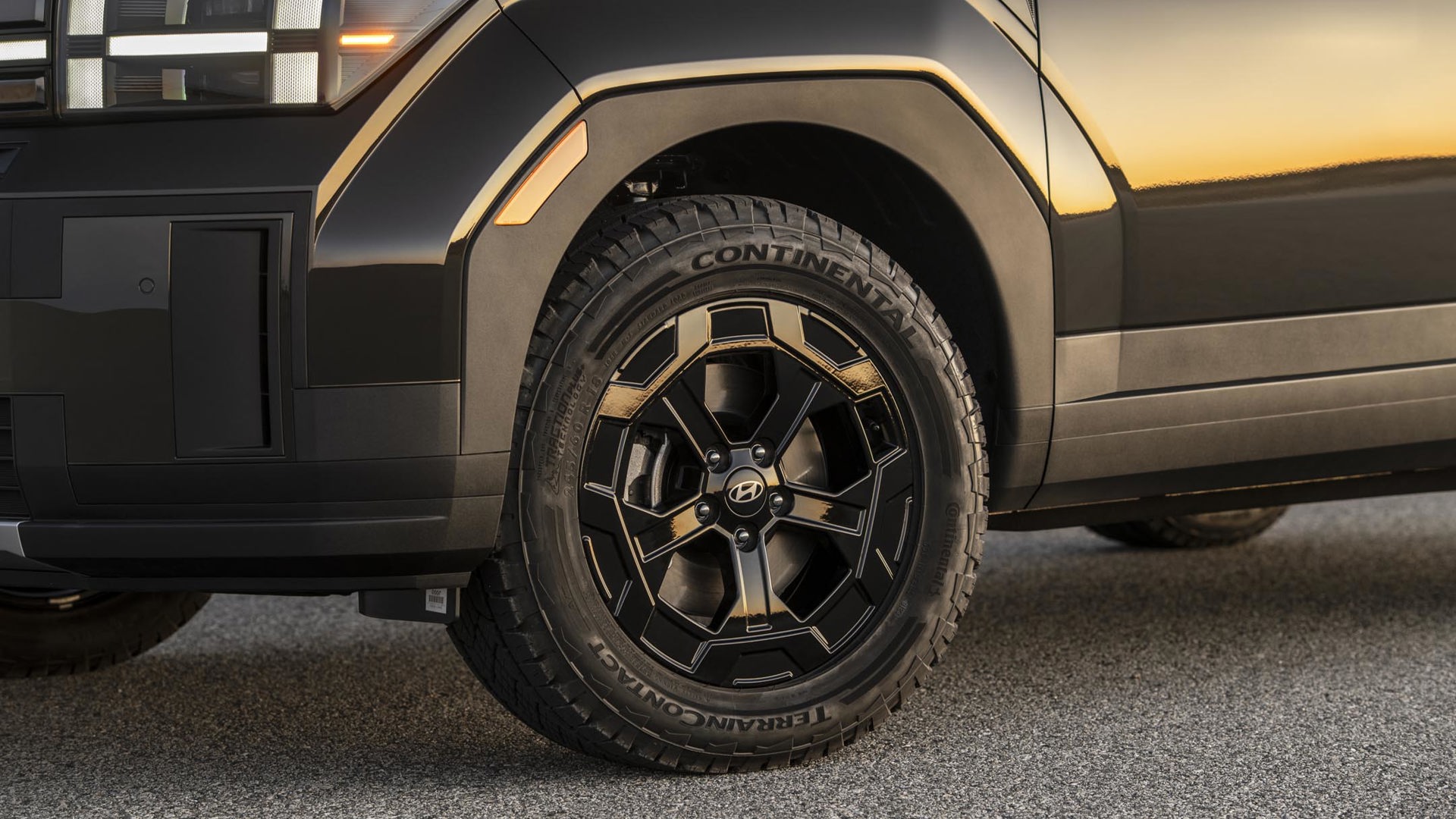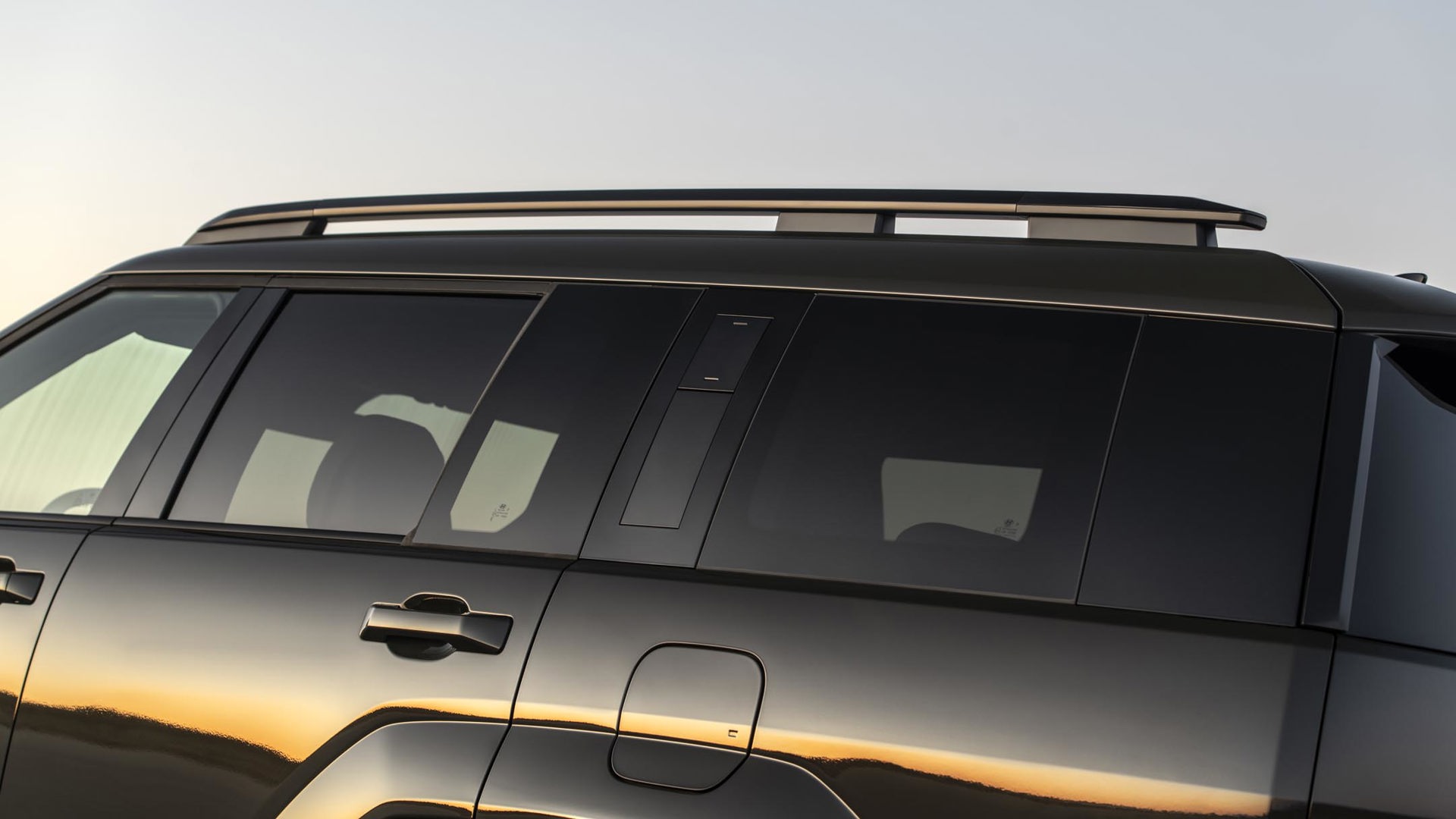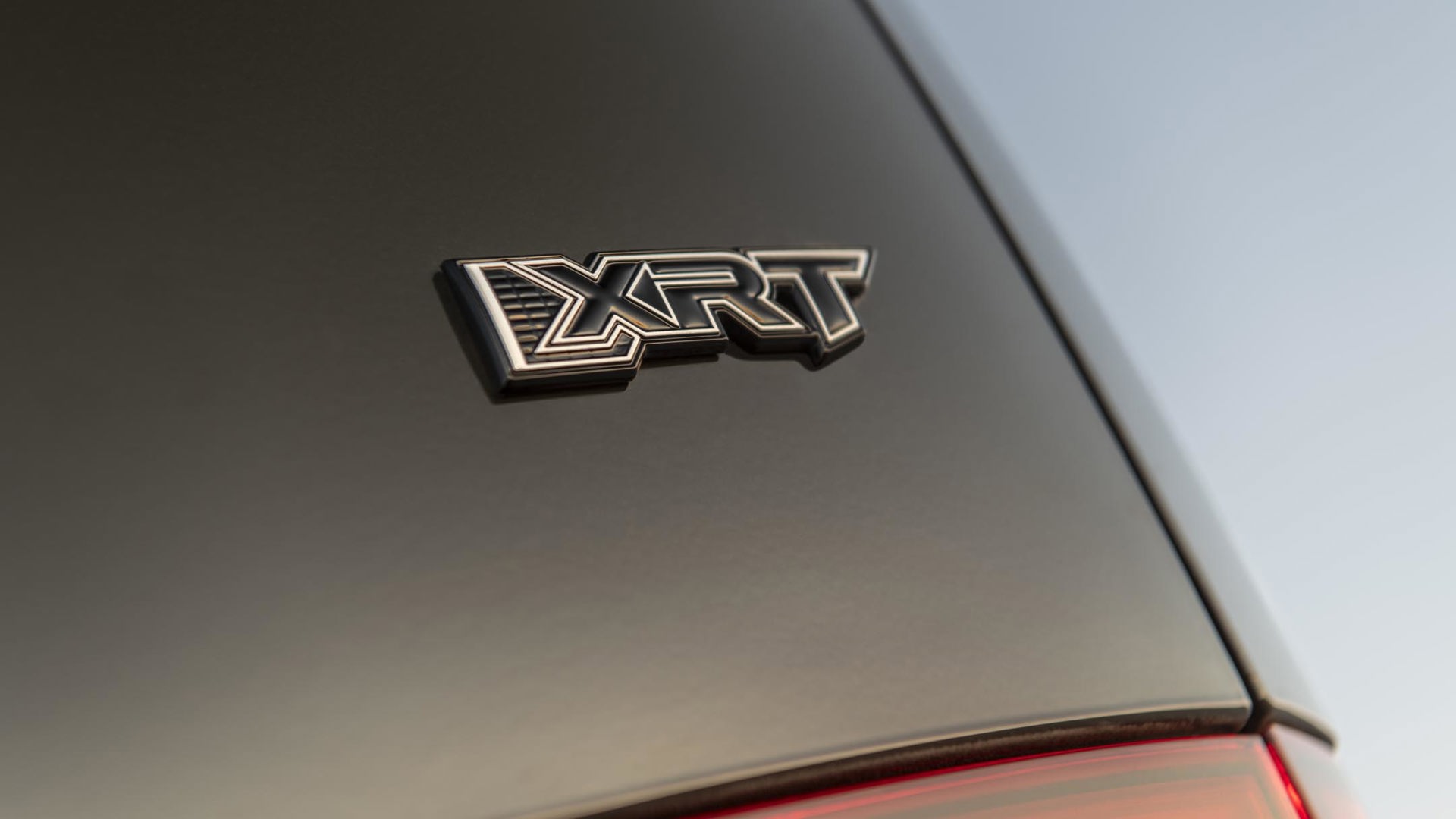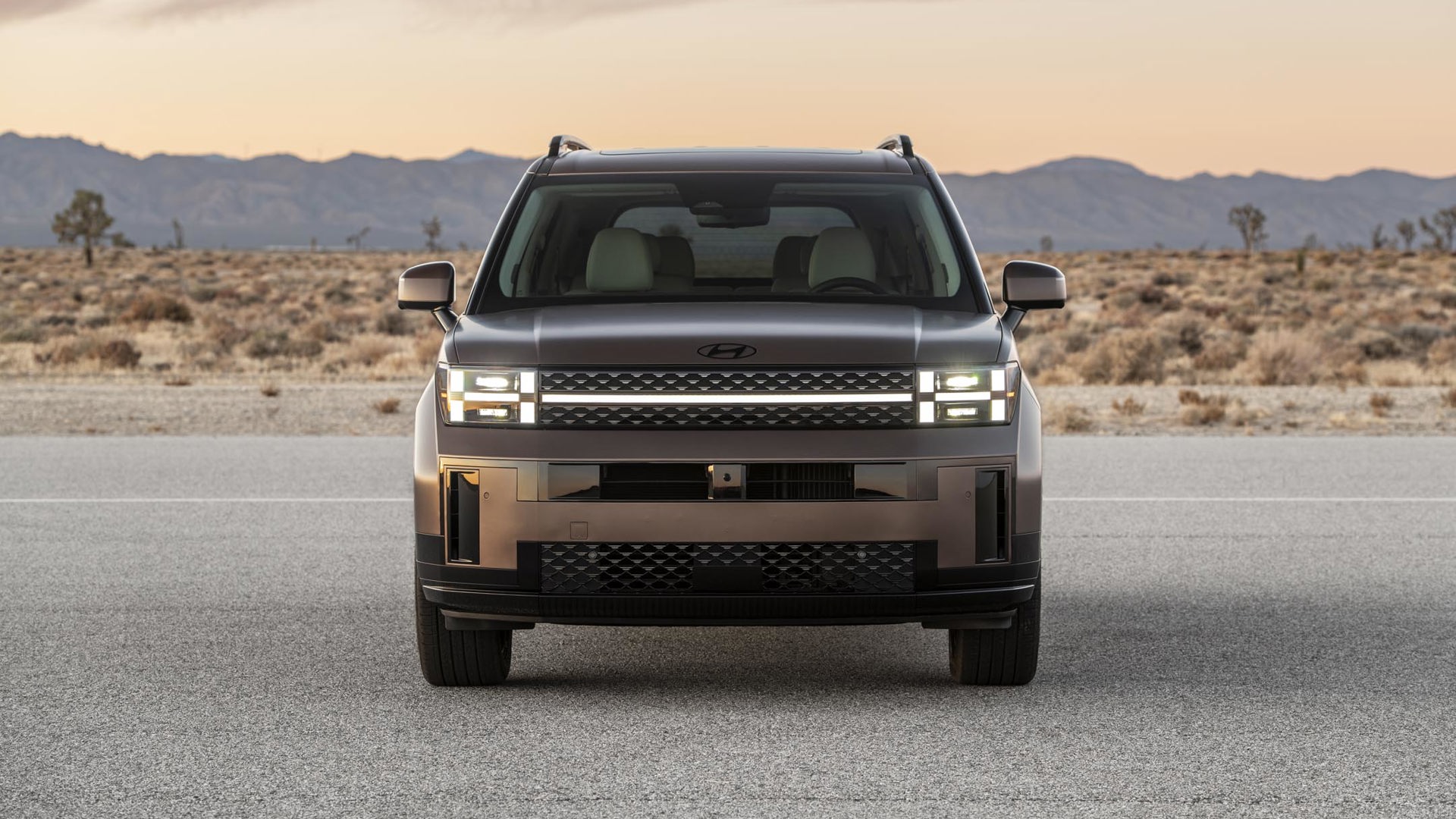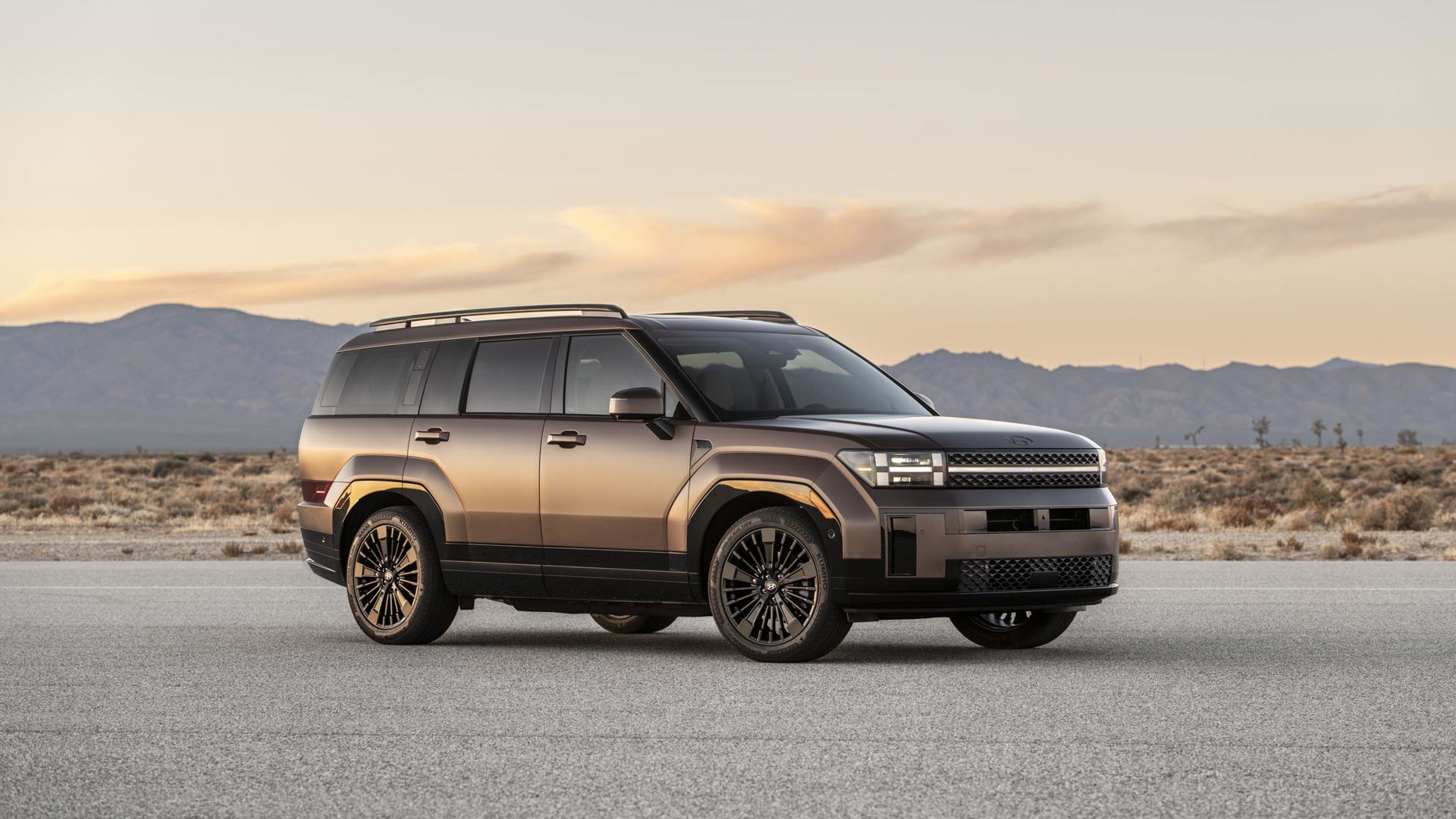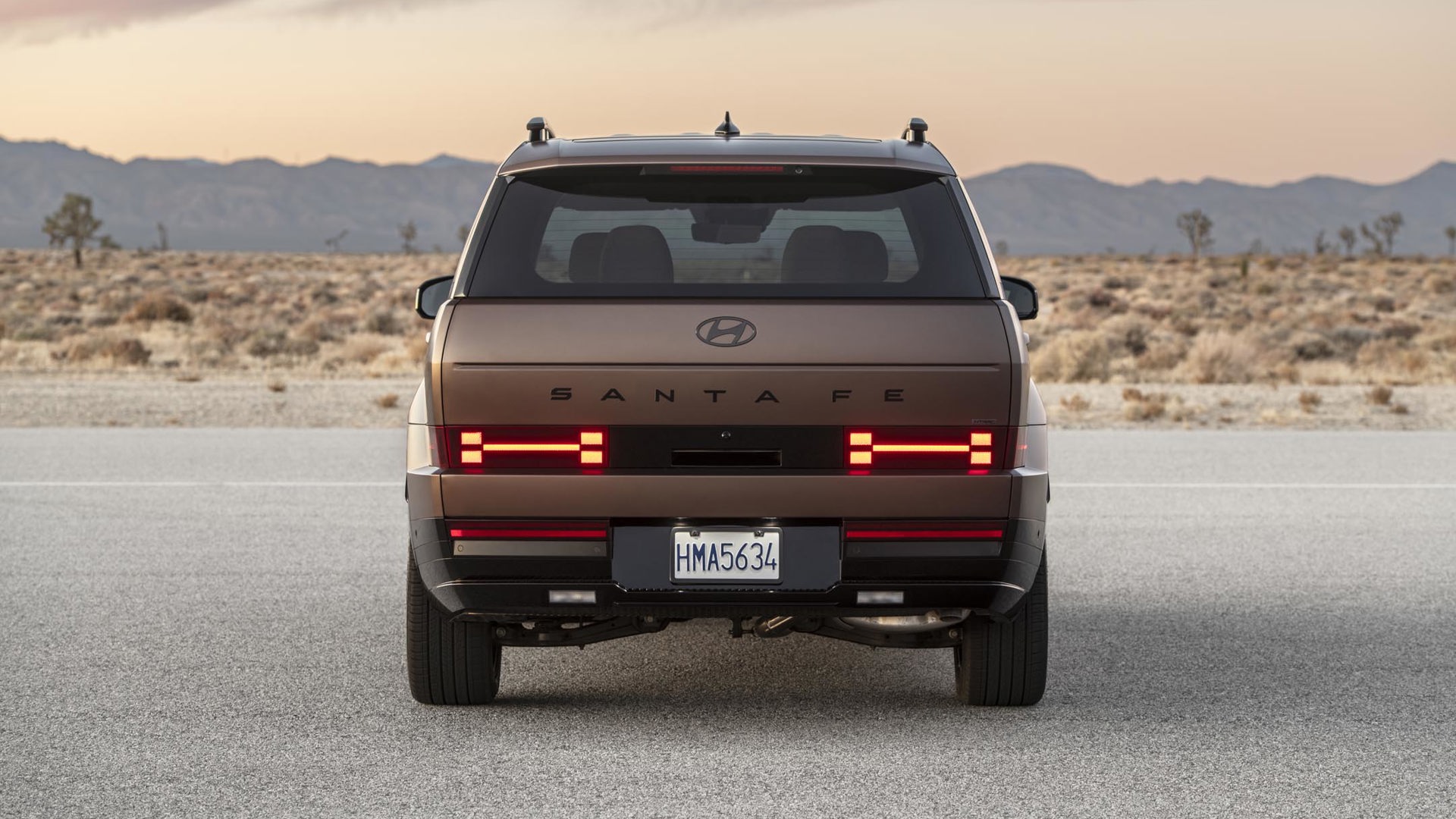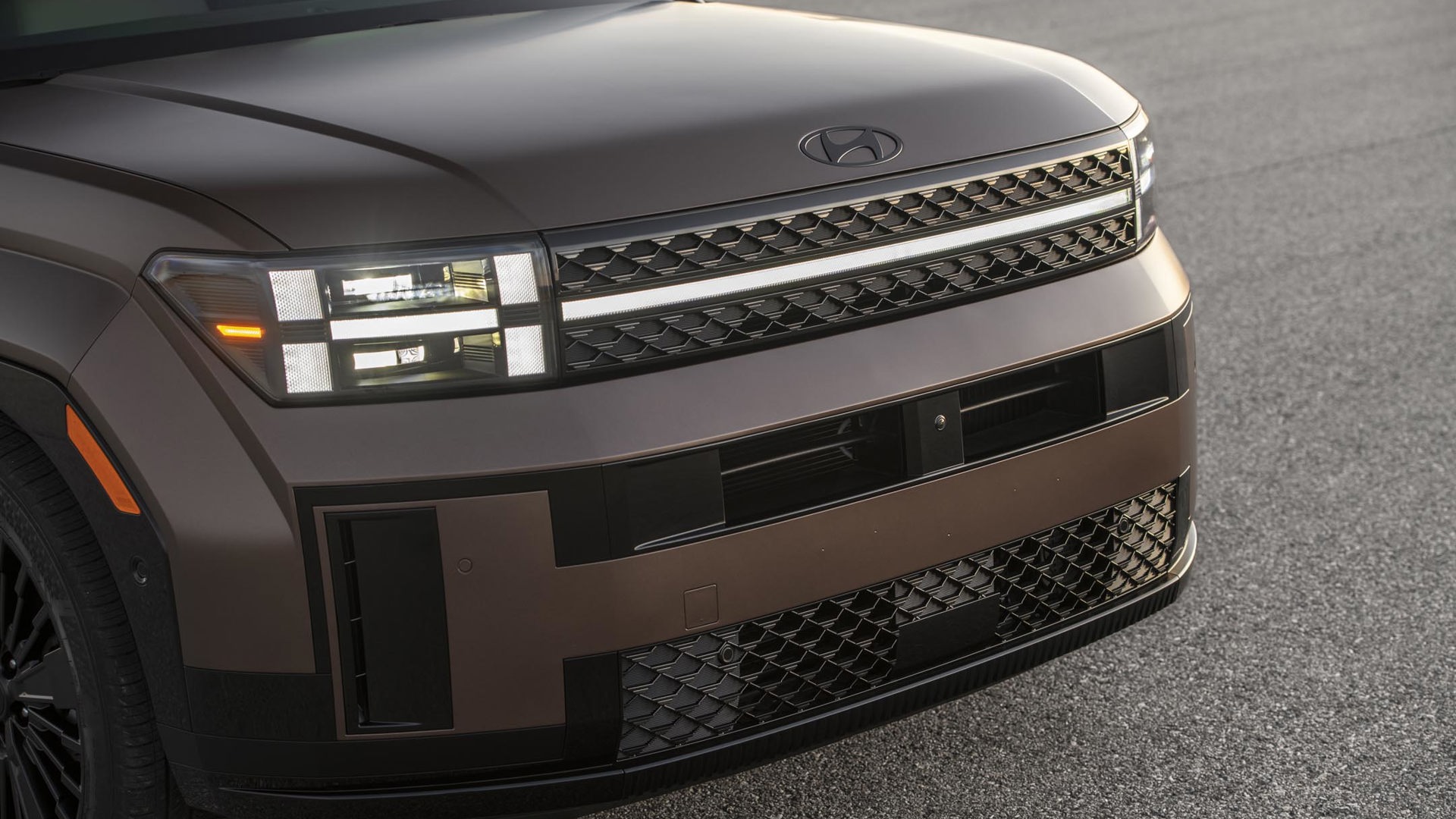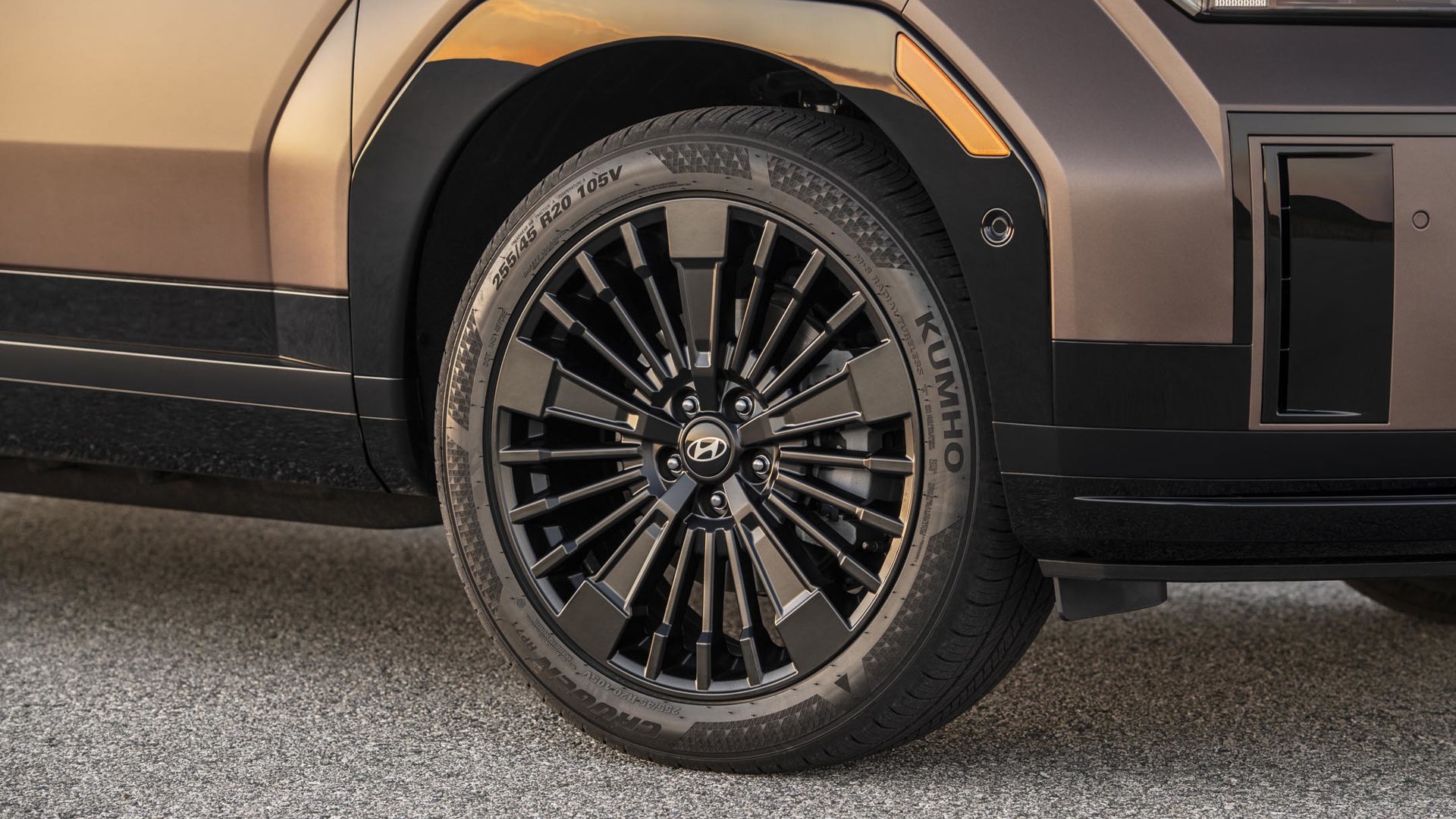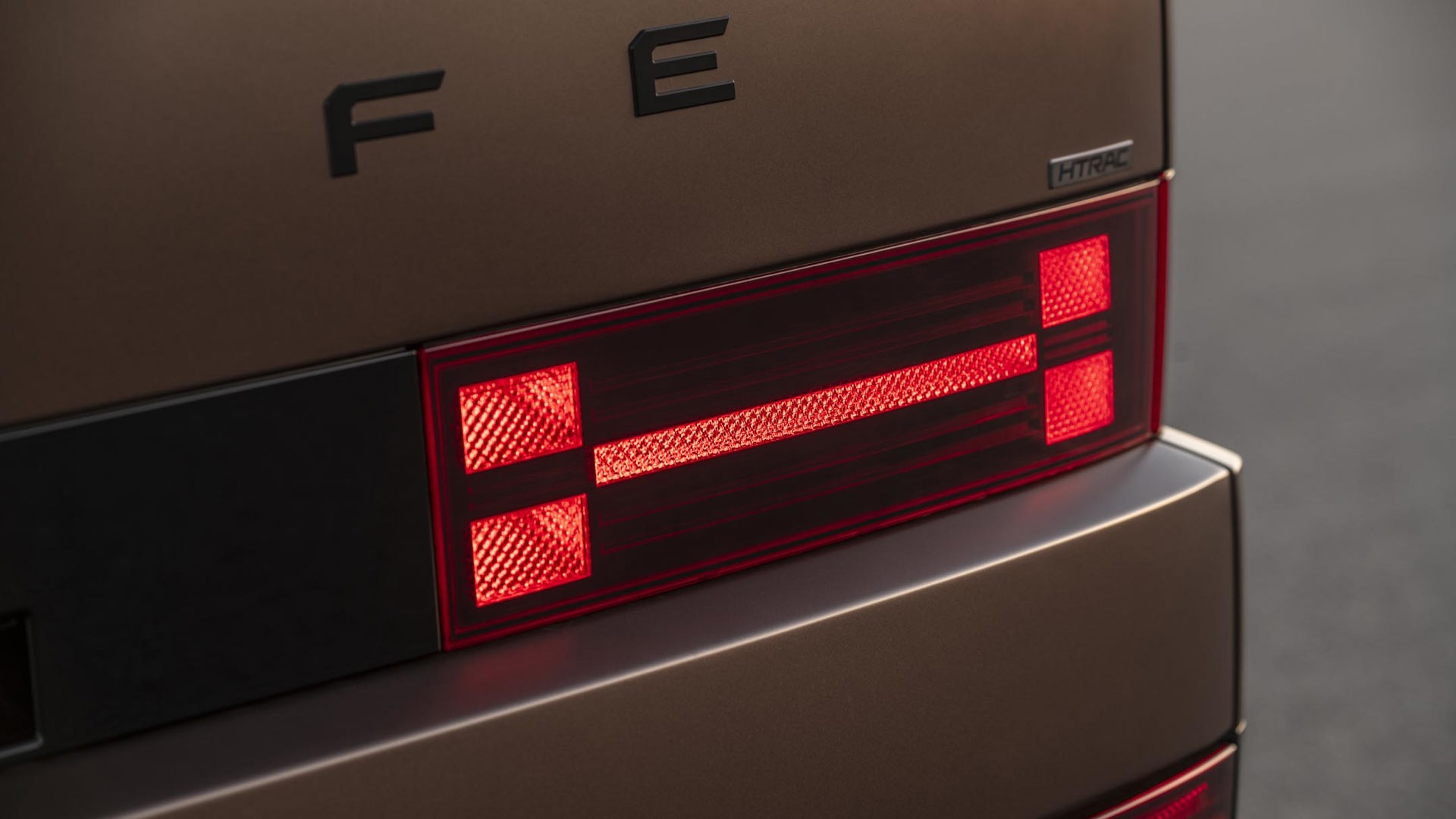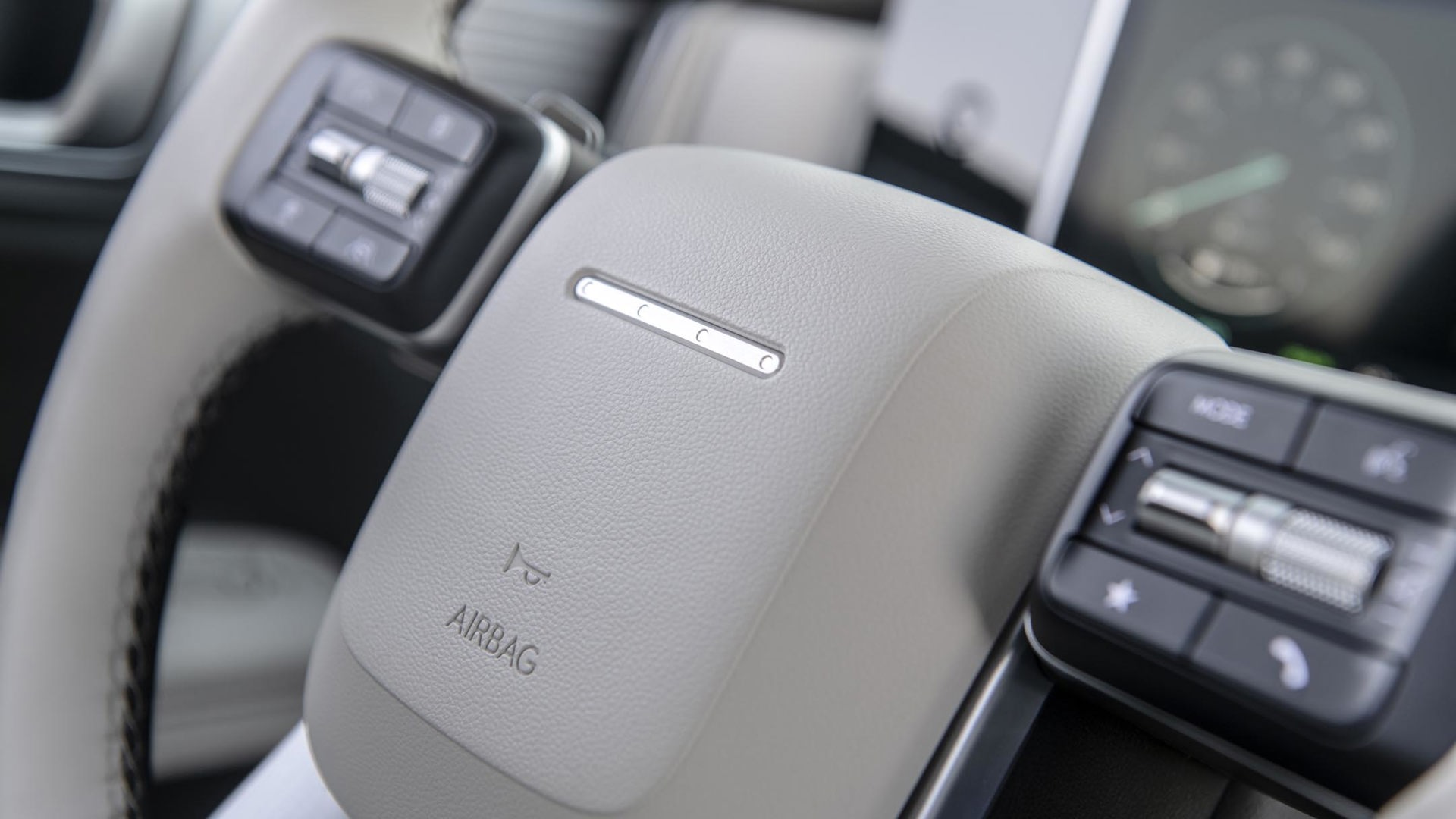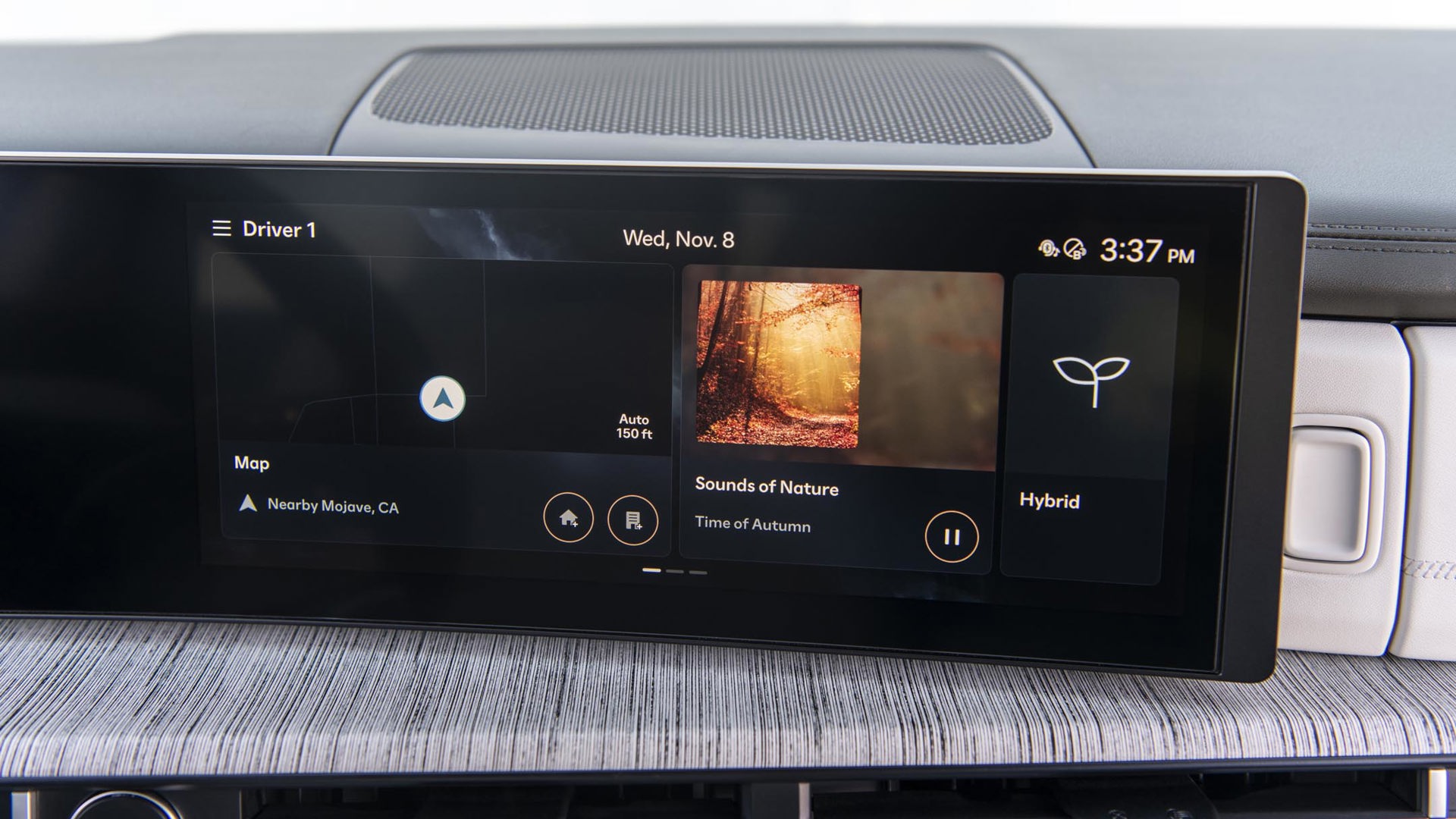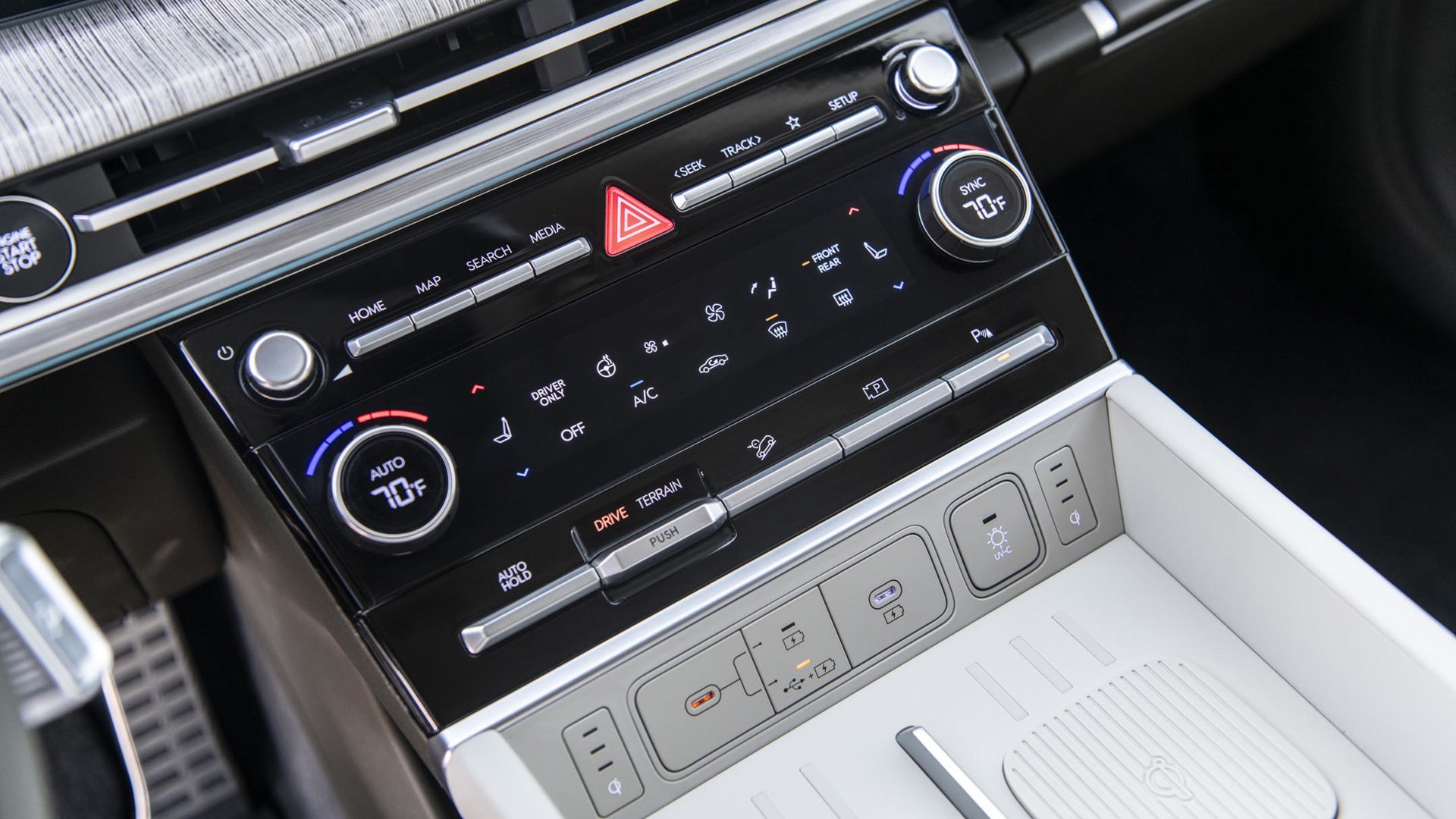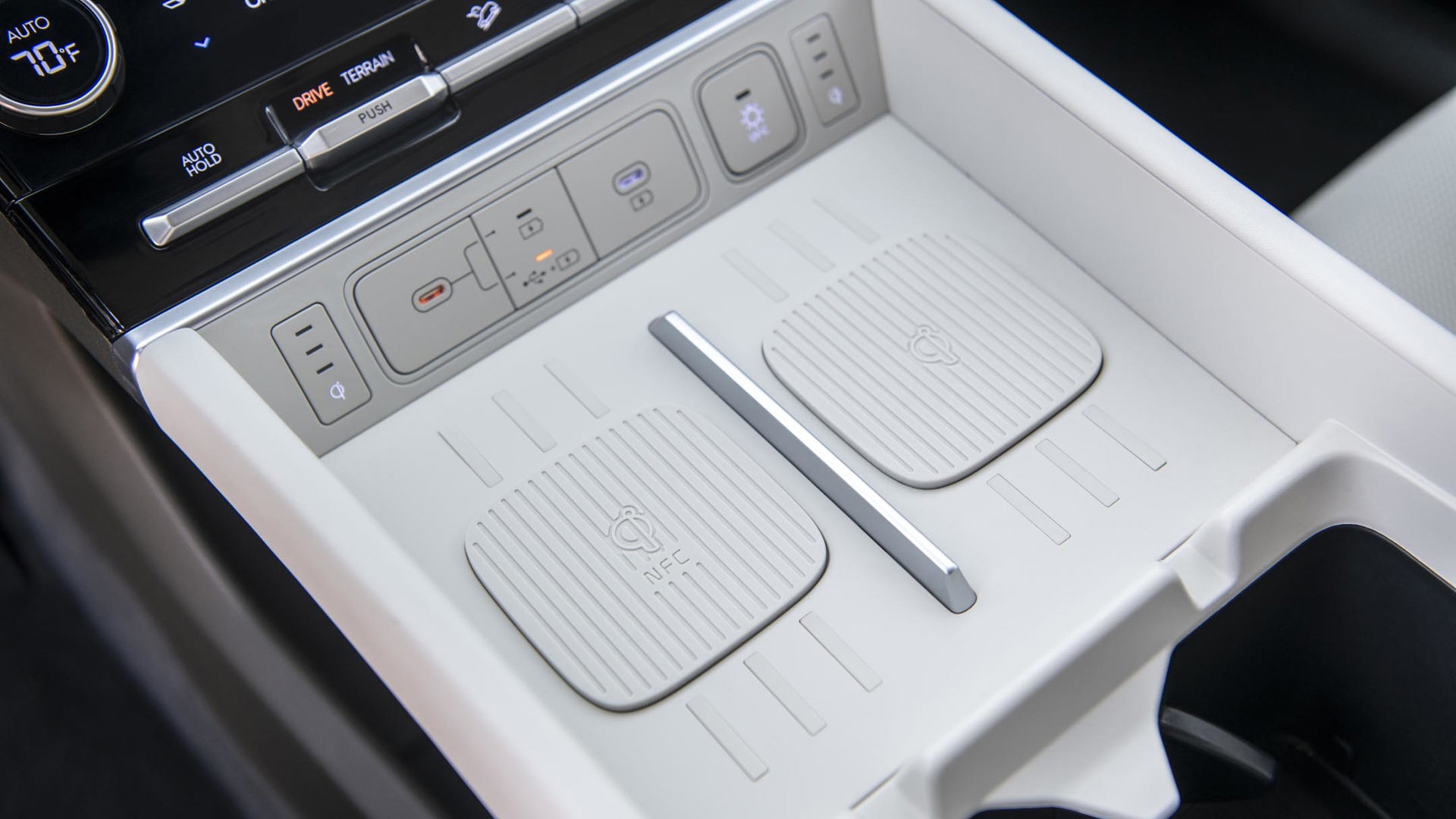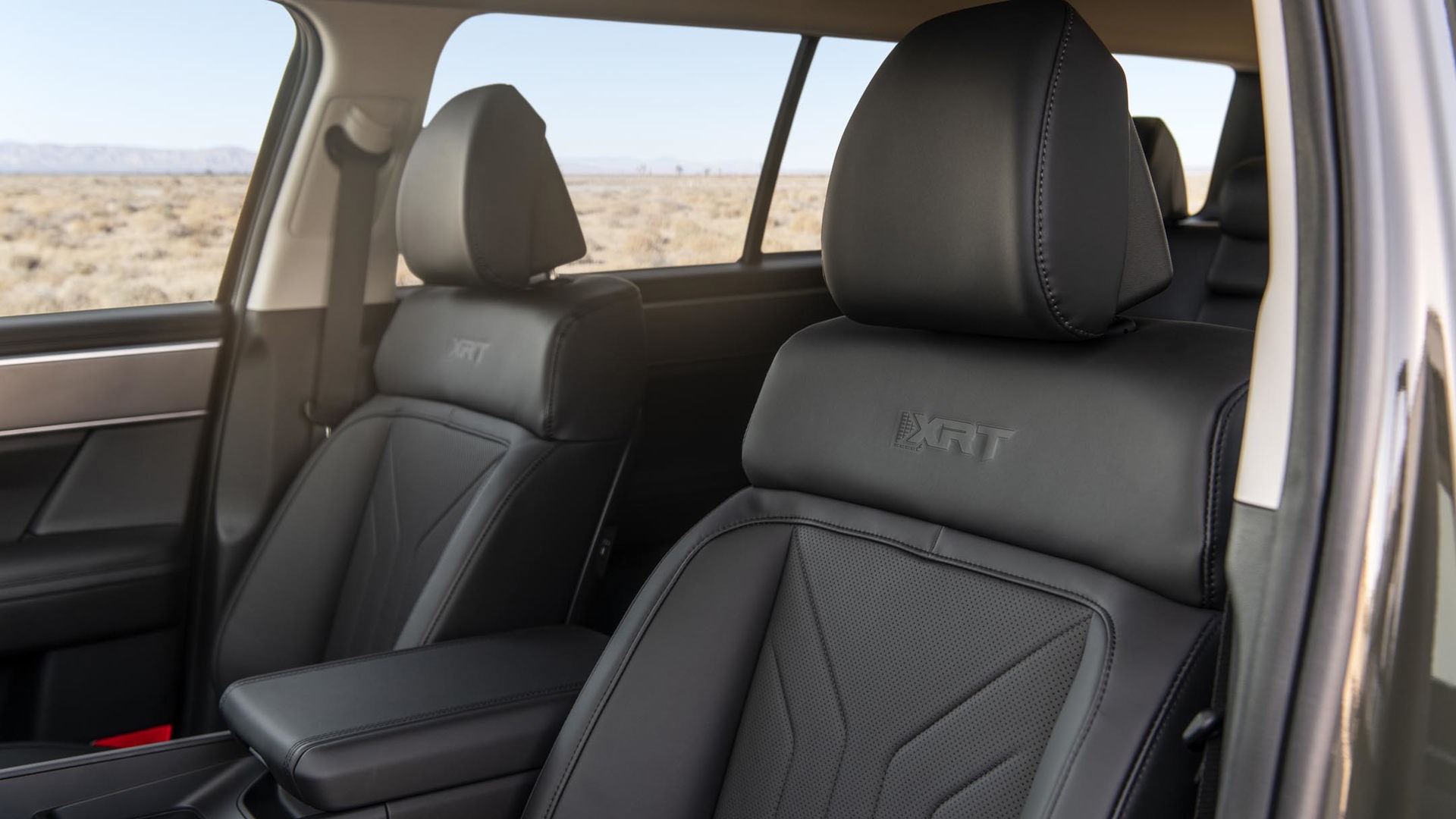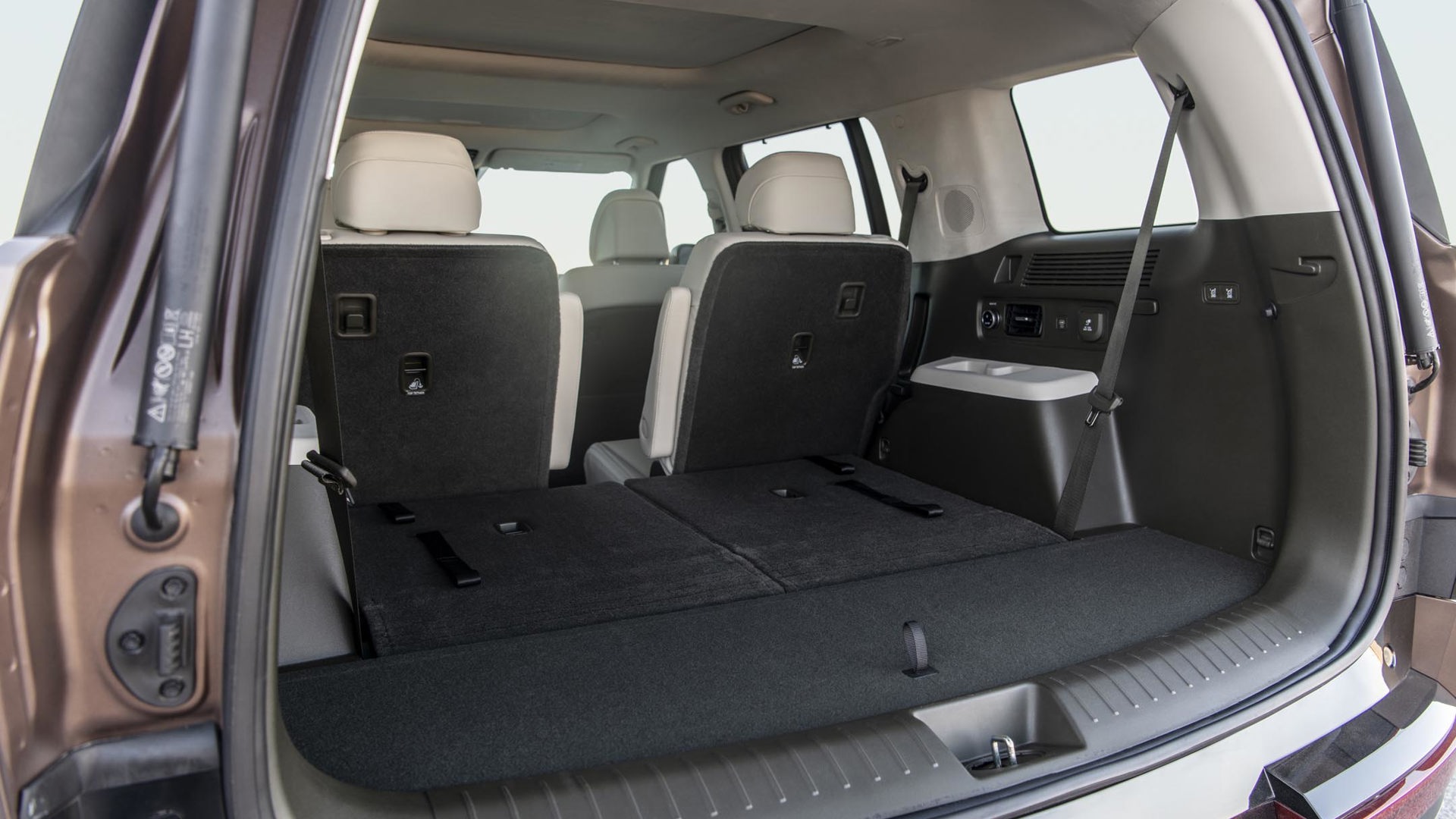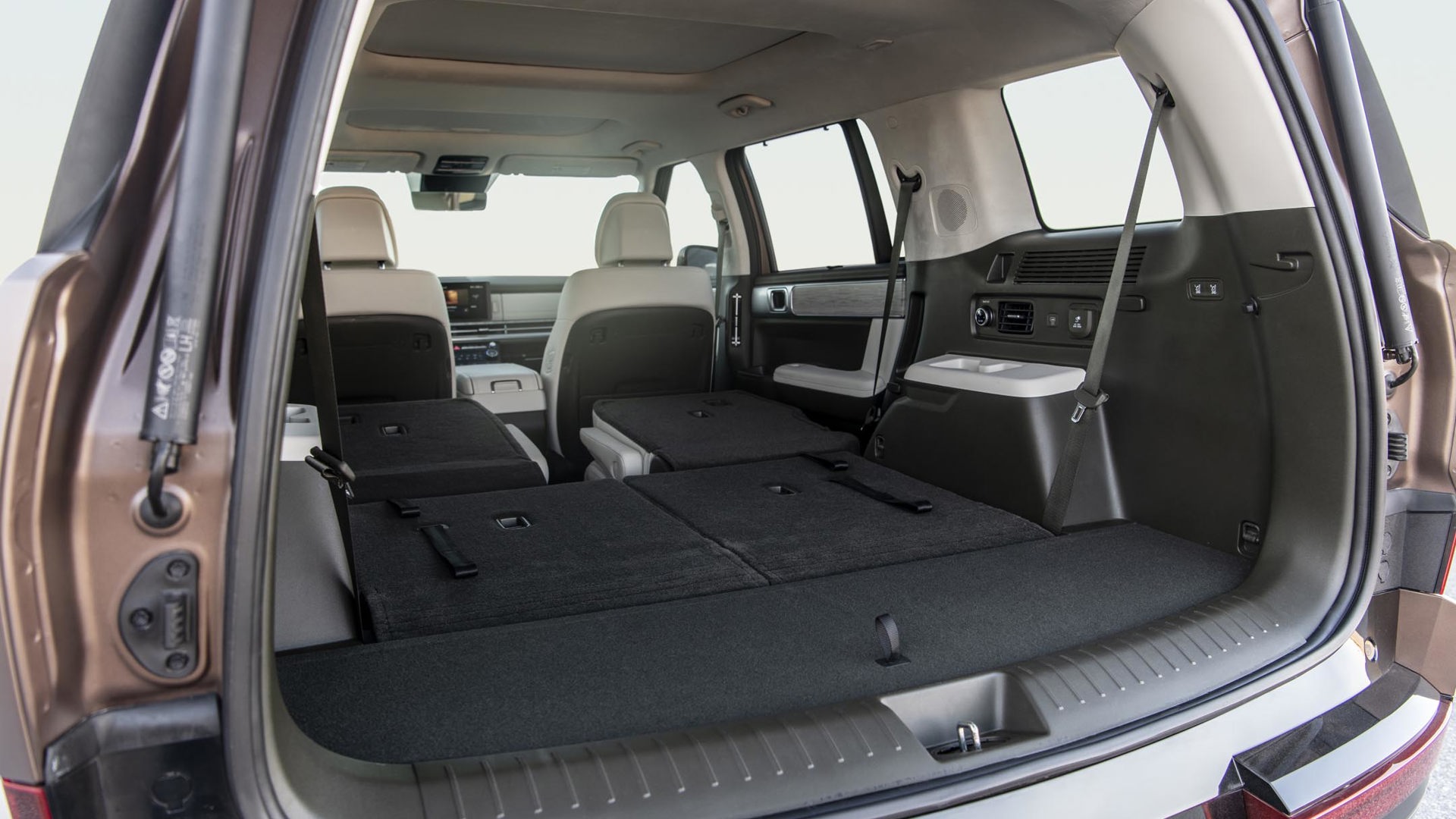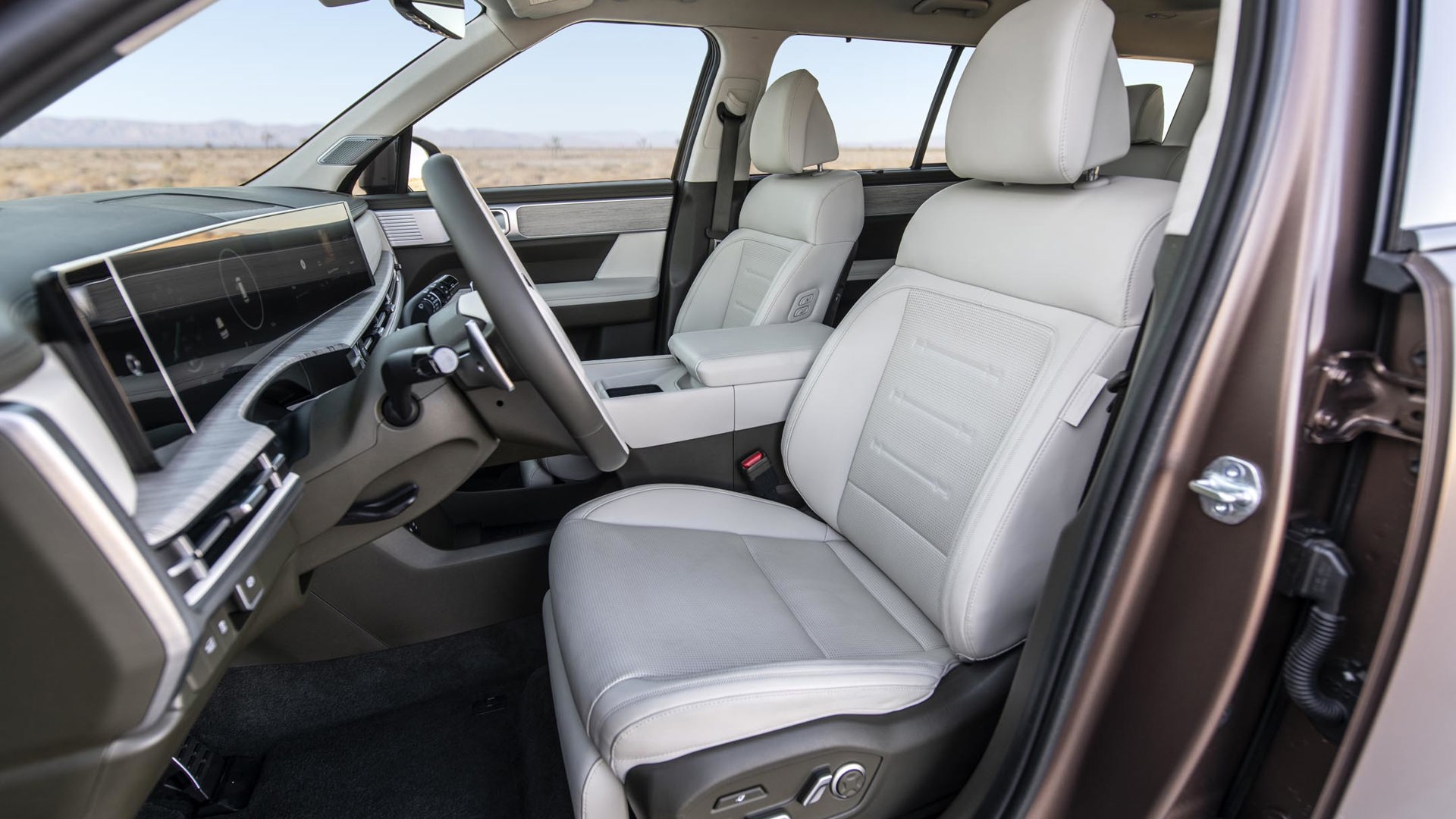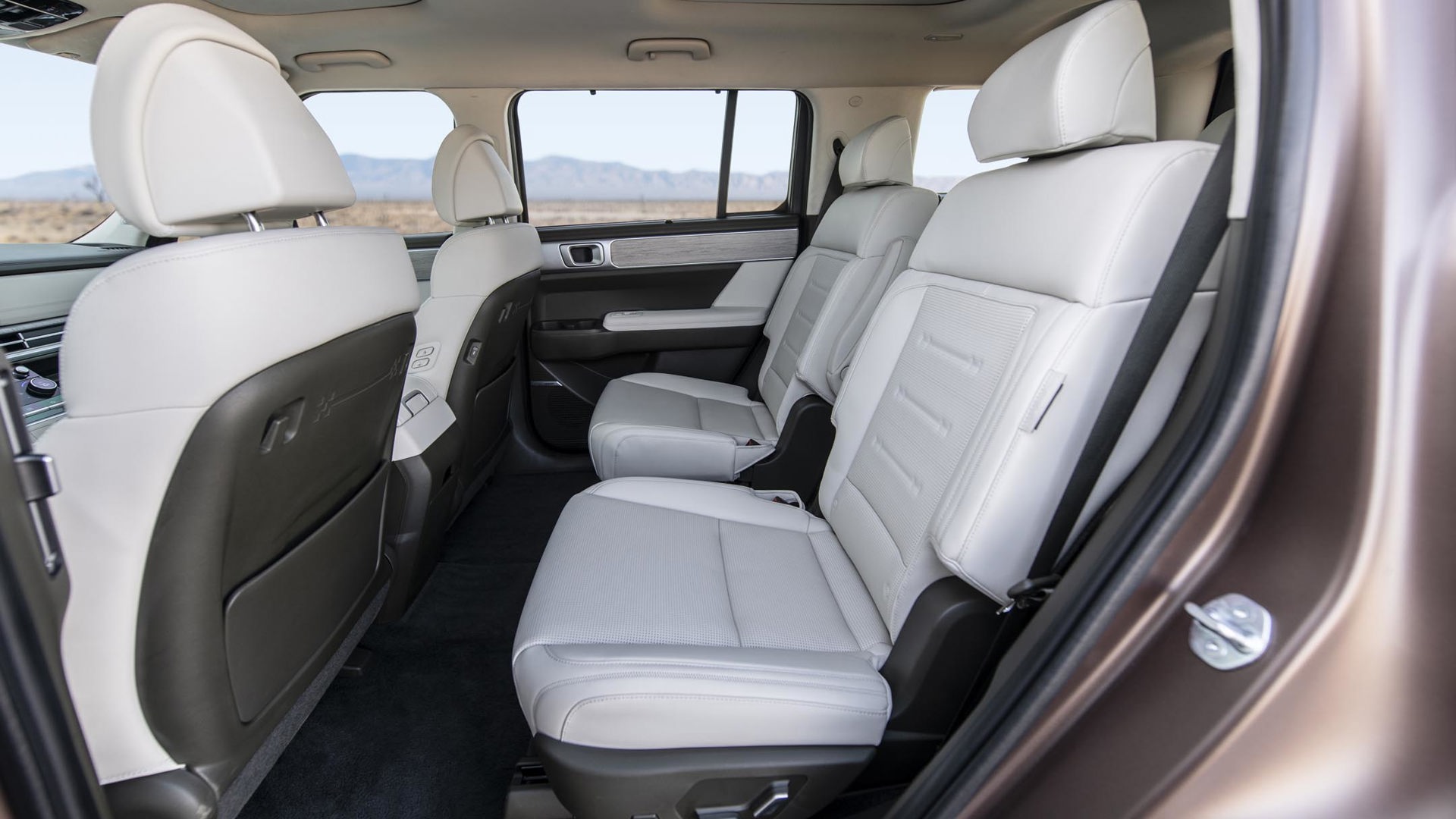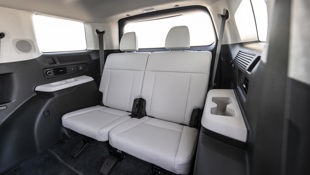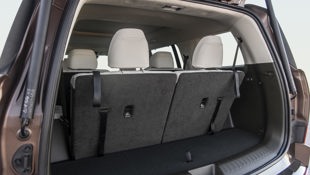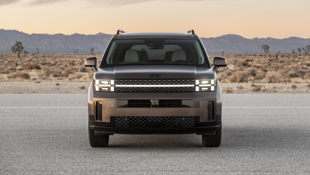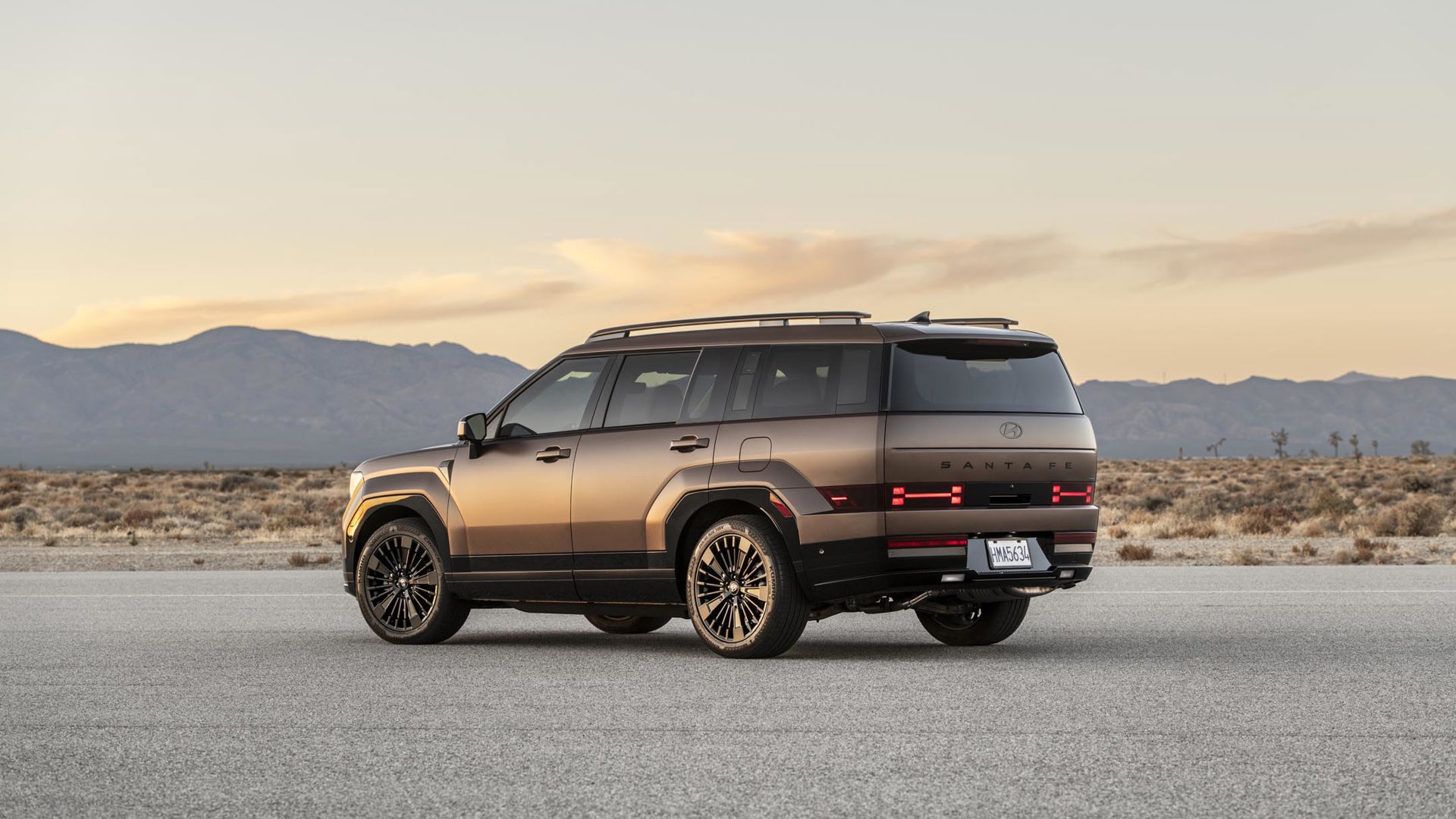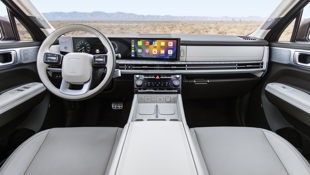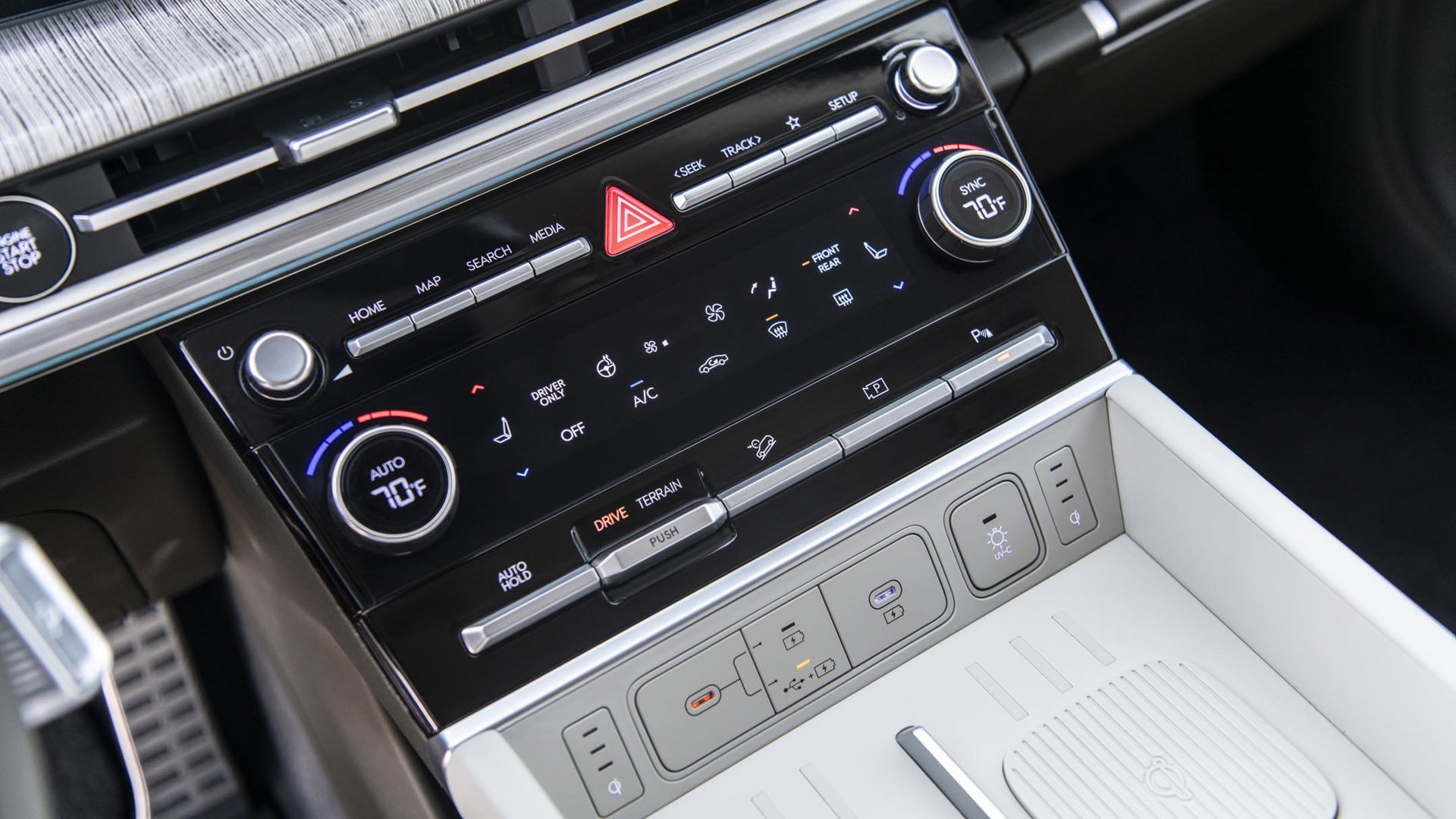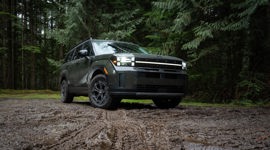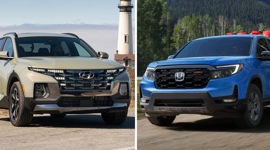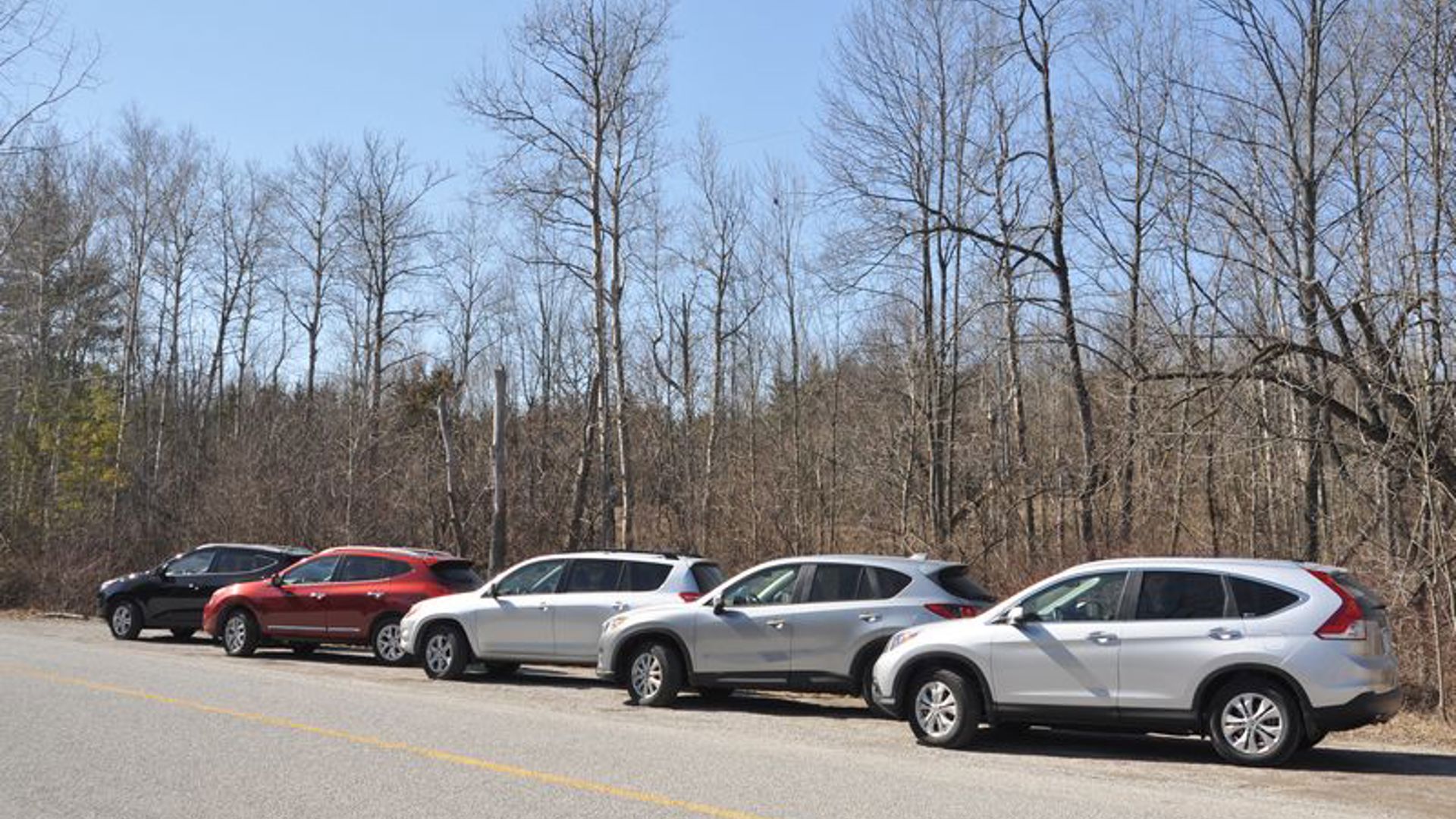You have to hand it to Hyundai – its redesigns are nothing if not drastic.
While most automakers take a measured approach to the process that tends to include more than a passing resemblance to whatever came before, this one relies on anything but. That’s why the 2024 Hyundai Santa Fe looks nothing like its predecessor, not to mention anything else in the brand’s lineup.
More Spacious
Beyond its fancy new duds, the redesigned Santa Fe has standard third-row seating made possible by a wheelbase that’s slightly longer than before. It’s been stretched to 2,815 mm (110.8 in) compared to 2,765 mm (108.9 in) for the outgoing generation, while the overall length measures 4,830 mm (190.2 in) versus 4,785 mm (188.4 in) before.
That’s not a massive difference, but then the Palisade still looms large in the lineup, both literally and figuratively. Even so, Hyundai claims the third row has 761 mm (30 in) of legroom – barely less than the 798 mm (31.4 in) in the Palisade. But then the rearmost seats in the Santa Fe offer space for two occupants versus three in the Palisade.
An Exciting XRT
Hyundai’s also hyping the width of the tailgate opening, as well as the flat-folding rear seats, all of which make it better suited for car camping or outdoor activities that require a lot of gear. That’s also where the all-new XRT trim comes in, with an adventurous new look to go with all-terrain tires and a bit more ground clearance than the rest of the lineup.
The trend of offering SUVs with rugged-ish capabilities isn’t a new one, with most brands doing the same. While the Santa Fe XRT looks a little mild next to Subaru’s Wilderness offerings, for instance, there’s something to be said for the tasteful execution of this SUV.
A New Look
The XRT touches certainly play well with the squared-off design of the 2024 Santa Fe, which has precisely nothing but its badges in common with the fourth-generation version that came before it. While an argument could be made that it’s sort of similar to the all-electric Hyundai Ioniq 5 in terms of overall design, the Santa Fe really has a look of its own.
The aesthetic has been simplified in a big way, with horizontal lines accentuating its overall boxiness. The lightbar that spans the grille, for instance, makes it look wide and rugged no matter the trim, while the borderline box flares do the same around the sides of the vehicle.
More of the same straight lines are found inside, with a matching design element that spans the dash and incorporates HVAC vents, plus twin widescreen displays (one for infotainment, the other driver information) housed under the same panel that accentuate the space. The Santa Fe also features available dual wireless phone chargers, plus standard wireless Apple CarPlay and Android Auto connectivity – the latter a feature that was previously unavailable with the automaker’s widescreen display.
Familiar Power
In spite of everything that’s new this time around, the powertrains carry over entirely unchanged — sort of. The base four-cylinder engine is gone, with the 1.6L turbocharged hybrid setup that was previously available as an upgrade trickling down throughout the lineup. That powertrain makes a hearty 232 hp and 271 lb-ft of torque — slightly more than it did in the previous generation.
At the top of the lineup remains the same 2.5L turbocharged four-cylinder as before, with its 277 hp marking a slight drop next to 281 last time. However, the 311 lb-ft of torque is unchanged. It’s likely the 2.5L engine will be standard in the Ultimate Calligraphy, as it was before, as well as the XRT trim.
Interestingly, Hyundai made no mention of the previously available plug-in hybrid (PHEV) powertrain that was based on the 1.6L turbo engine. However, it’s possible that it relaunches at a later date.
Pricing and availability will be announced at a later date. Hyundai says the gas-only version is scheduled to launch in March 2024, followed by the hybrid powertrain later in the spring.
